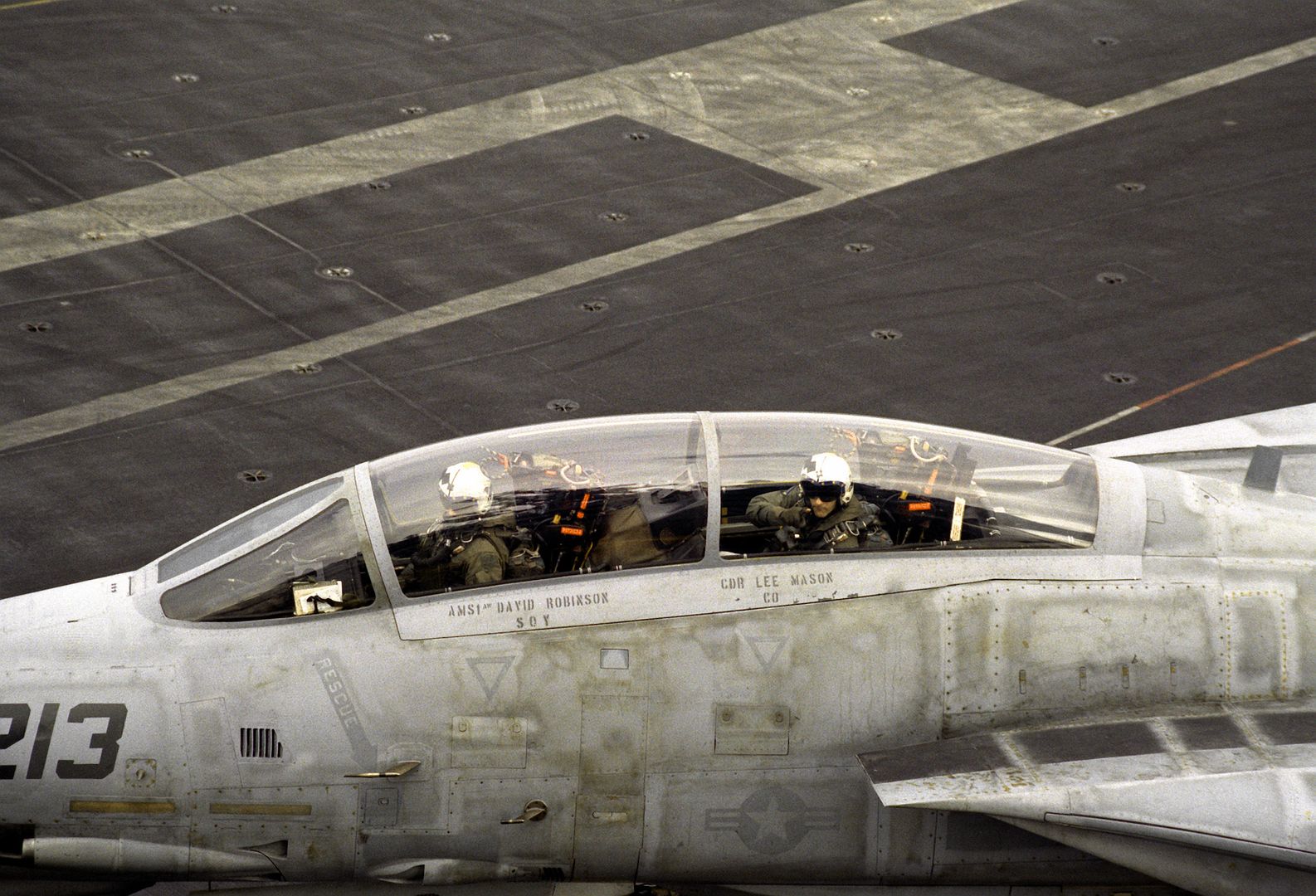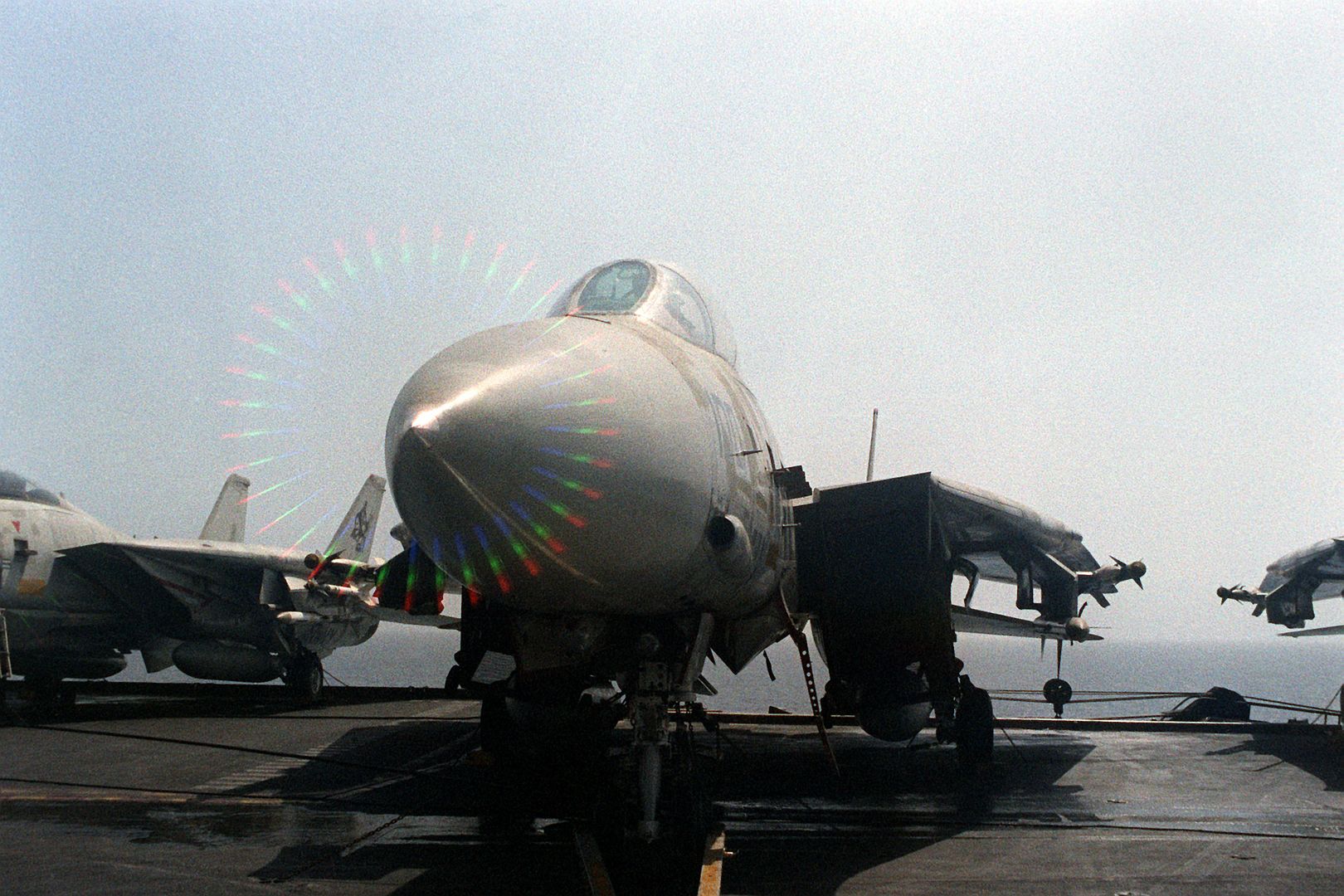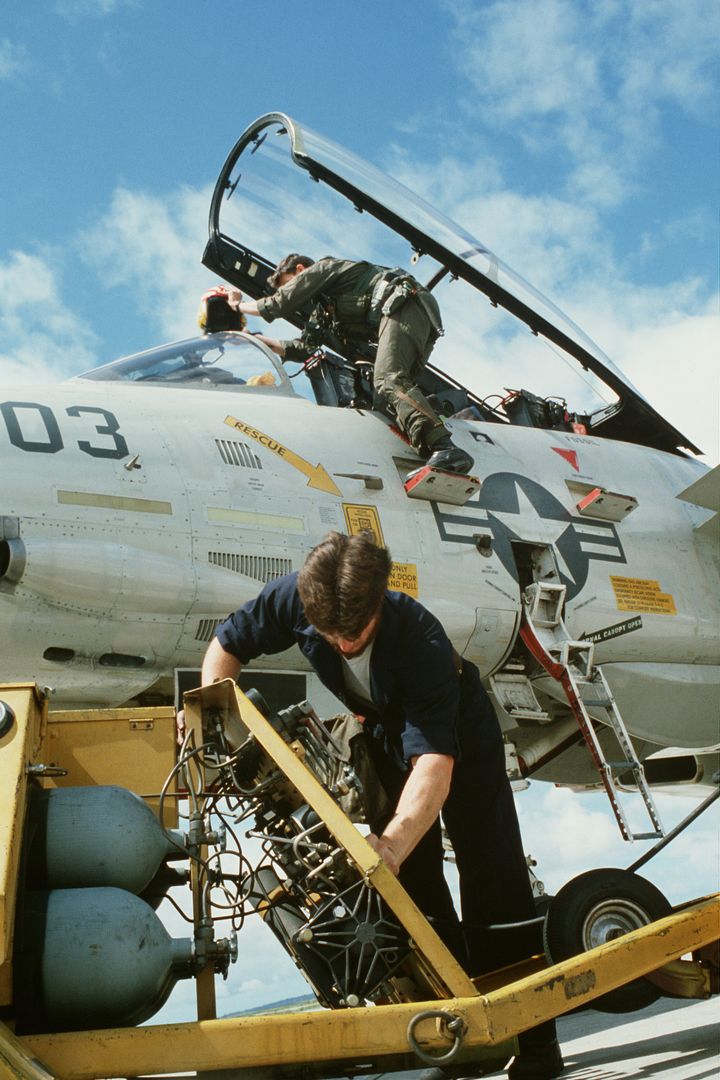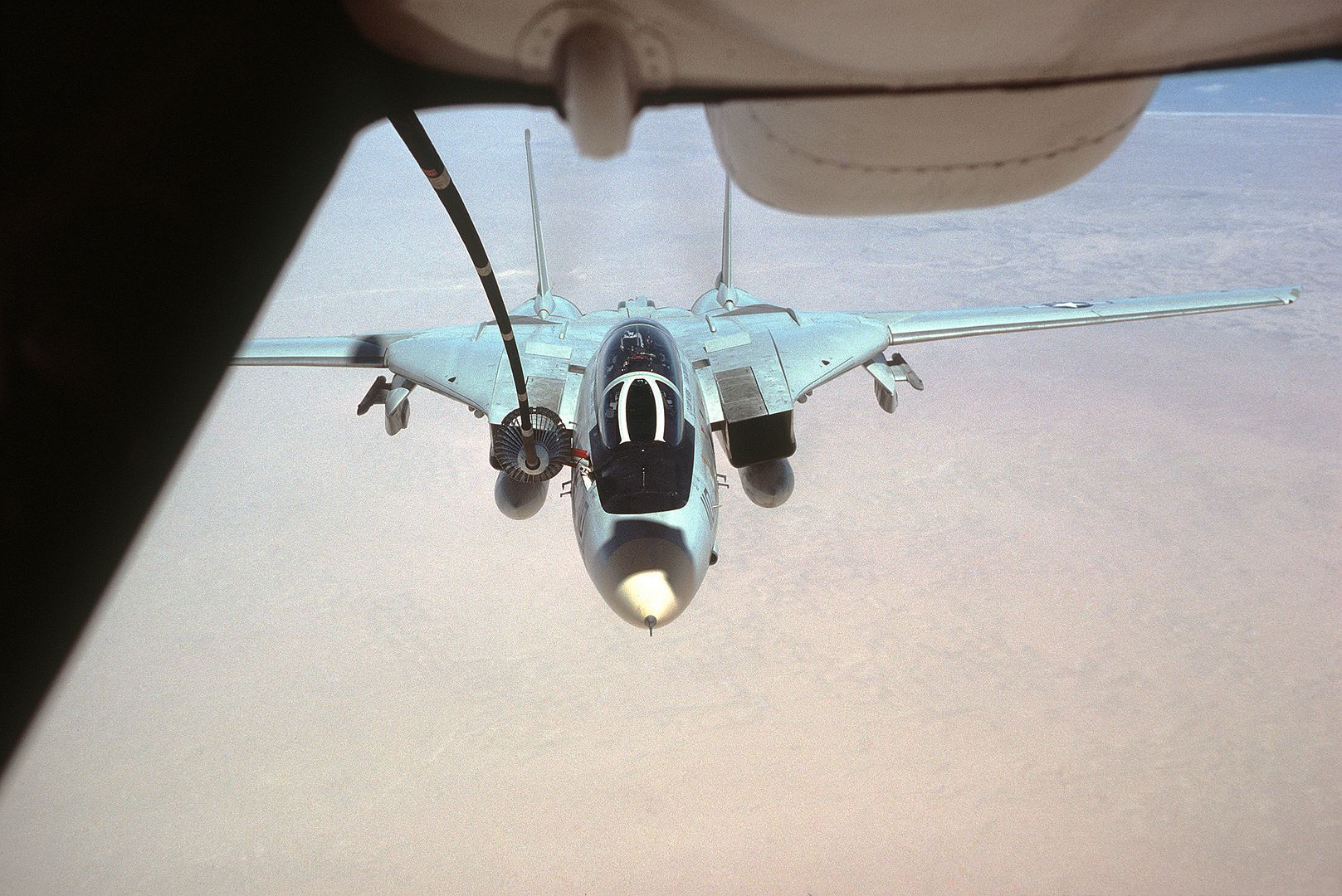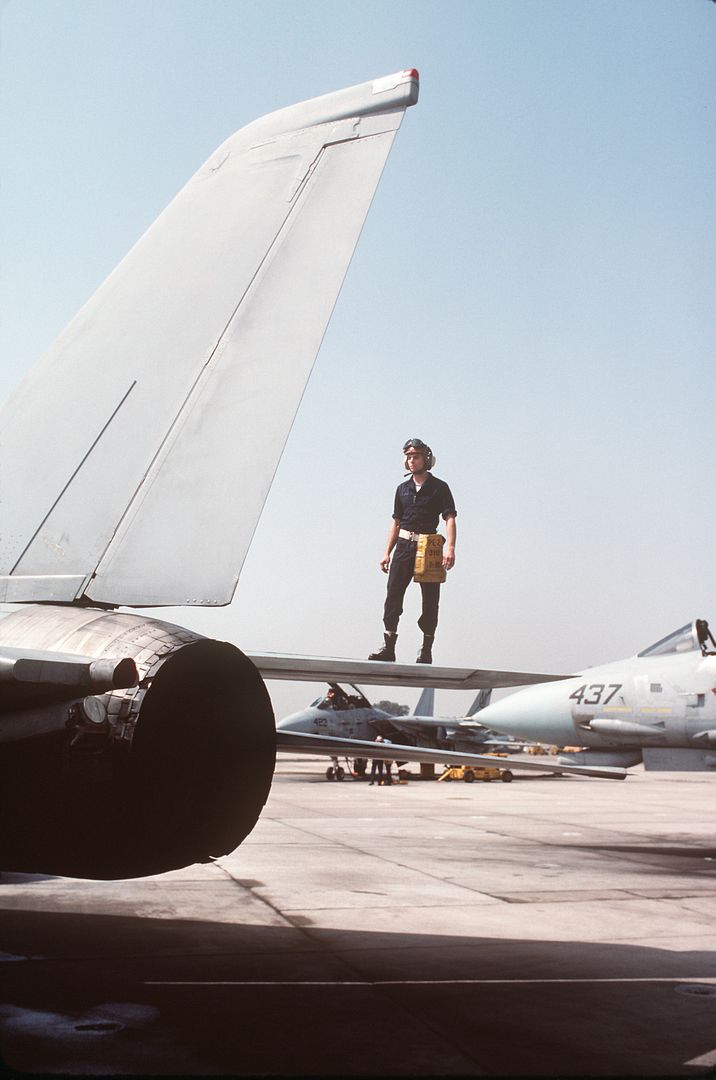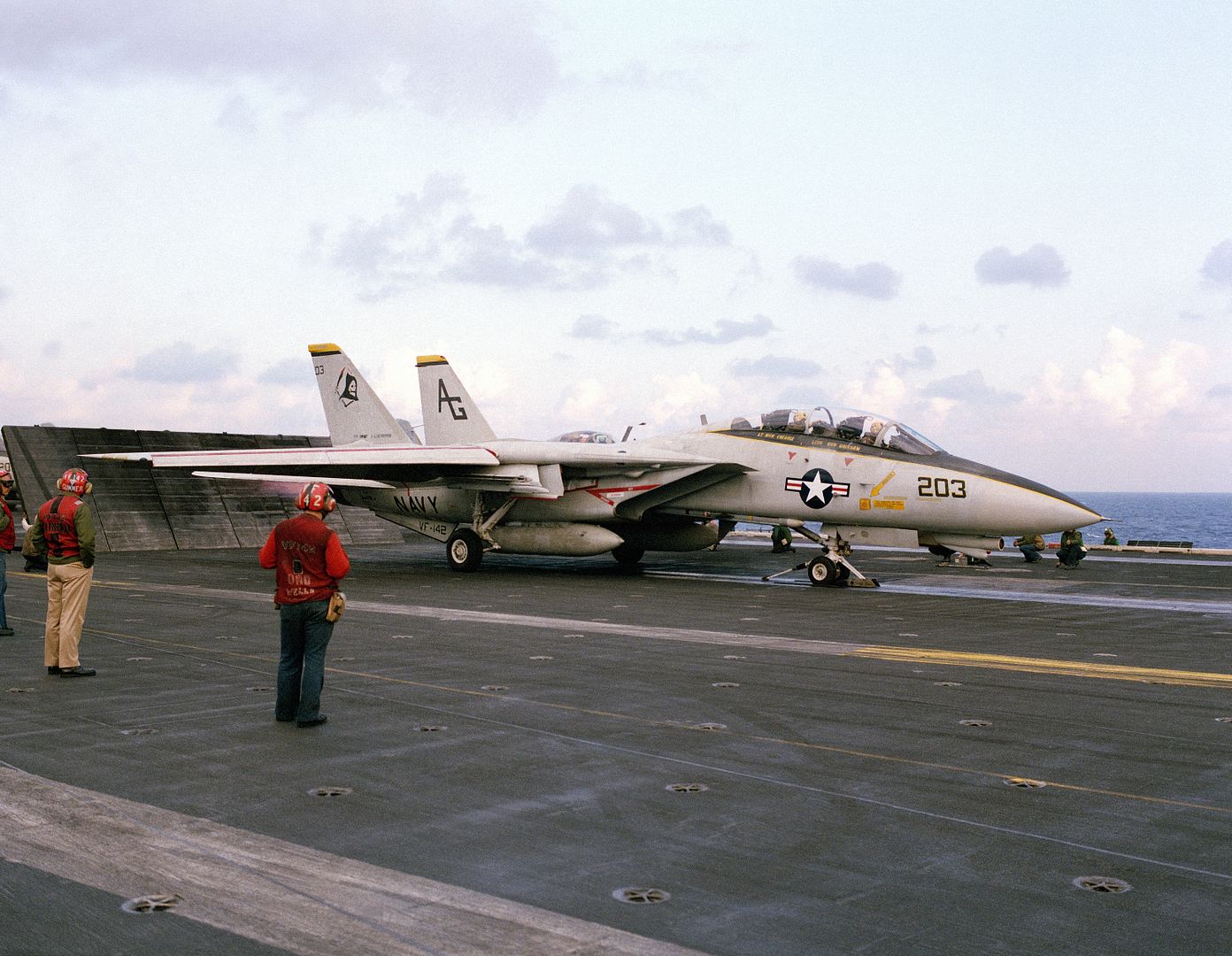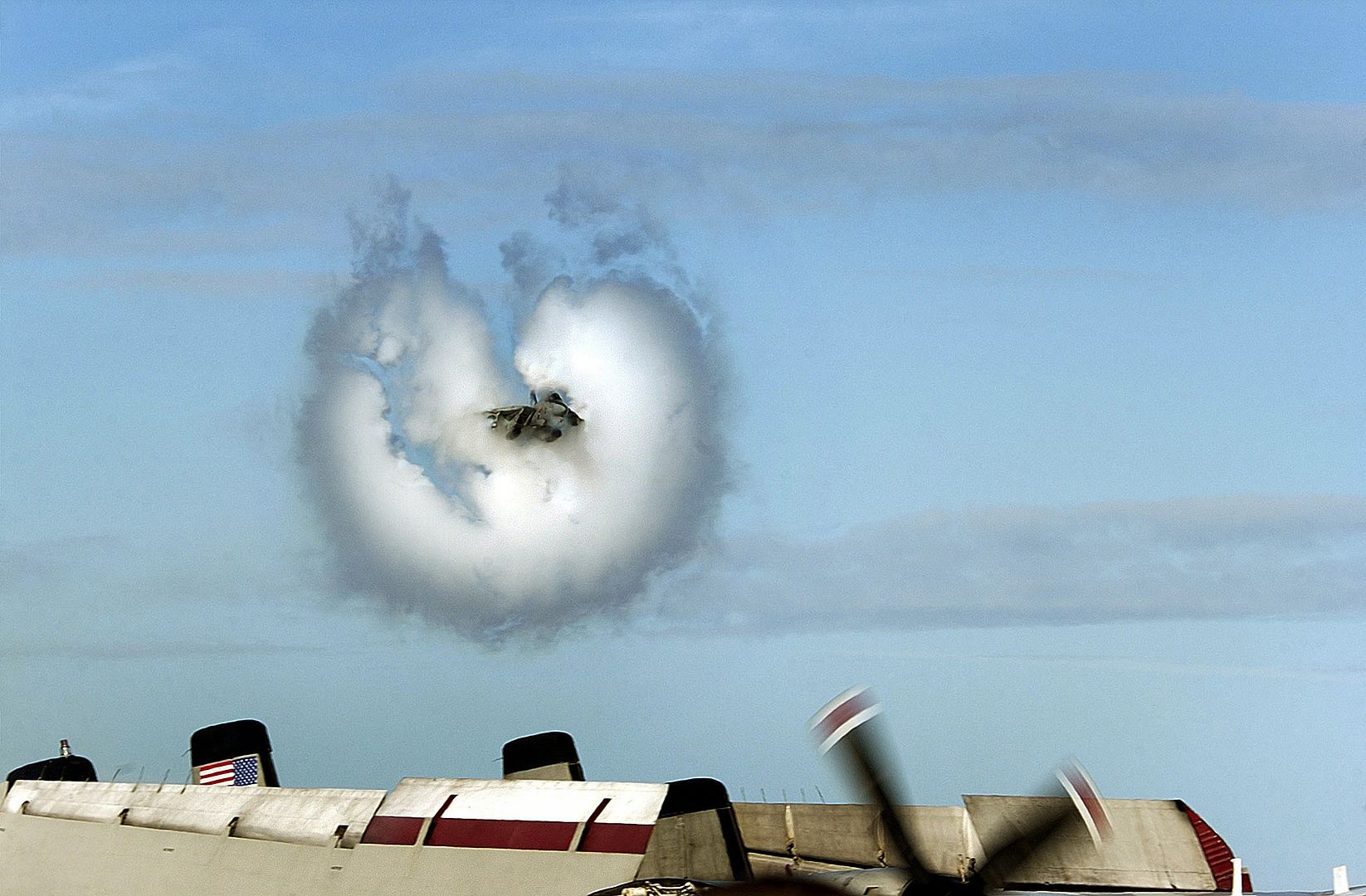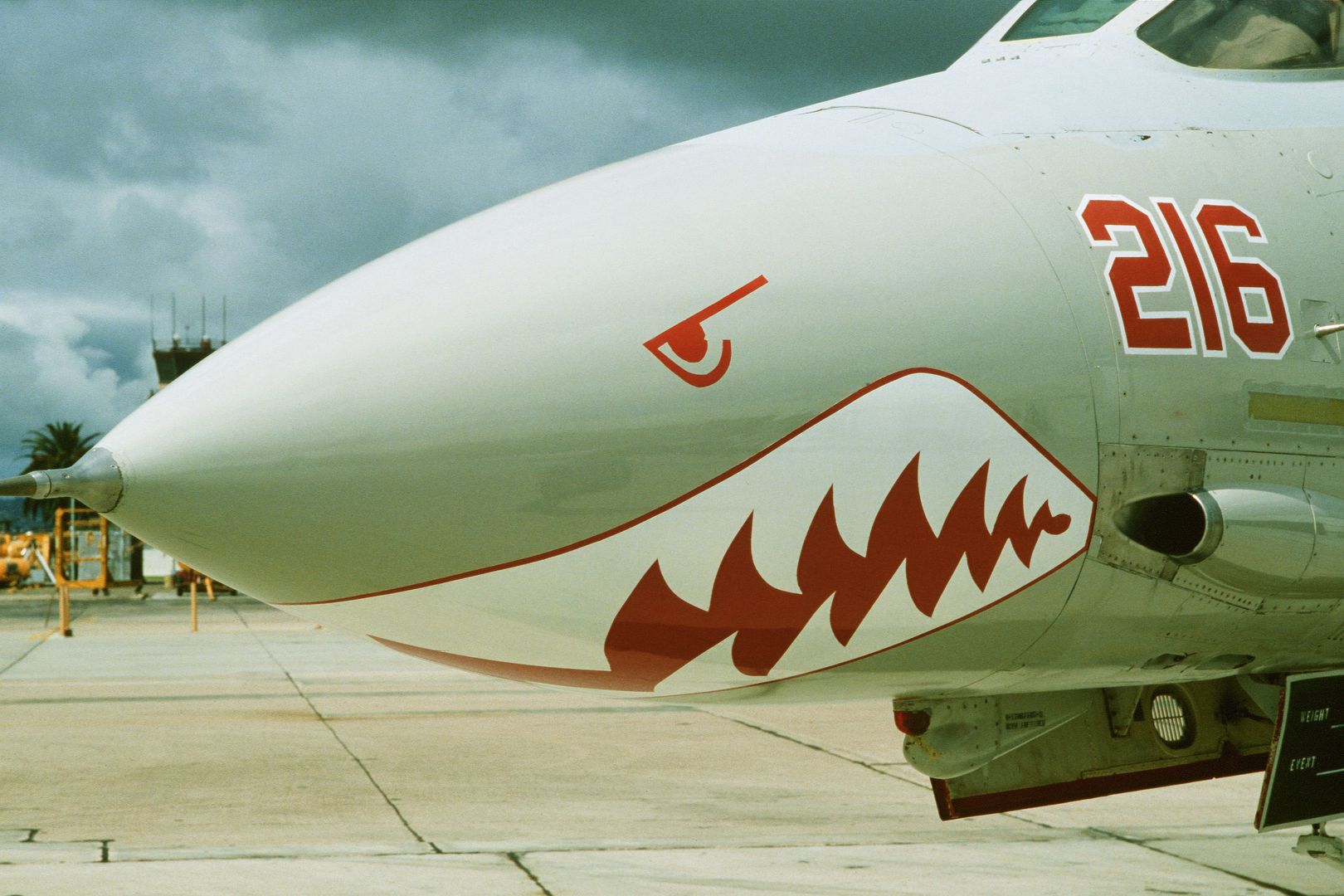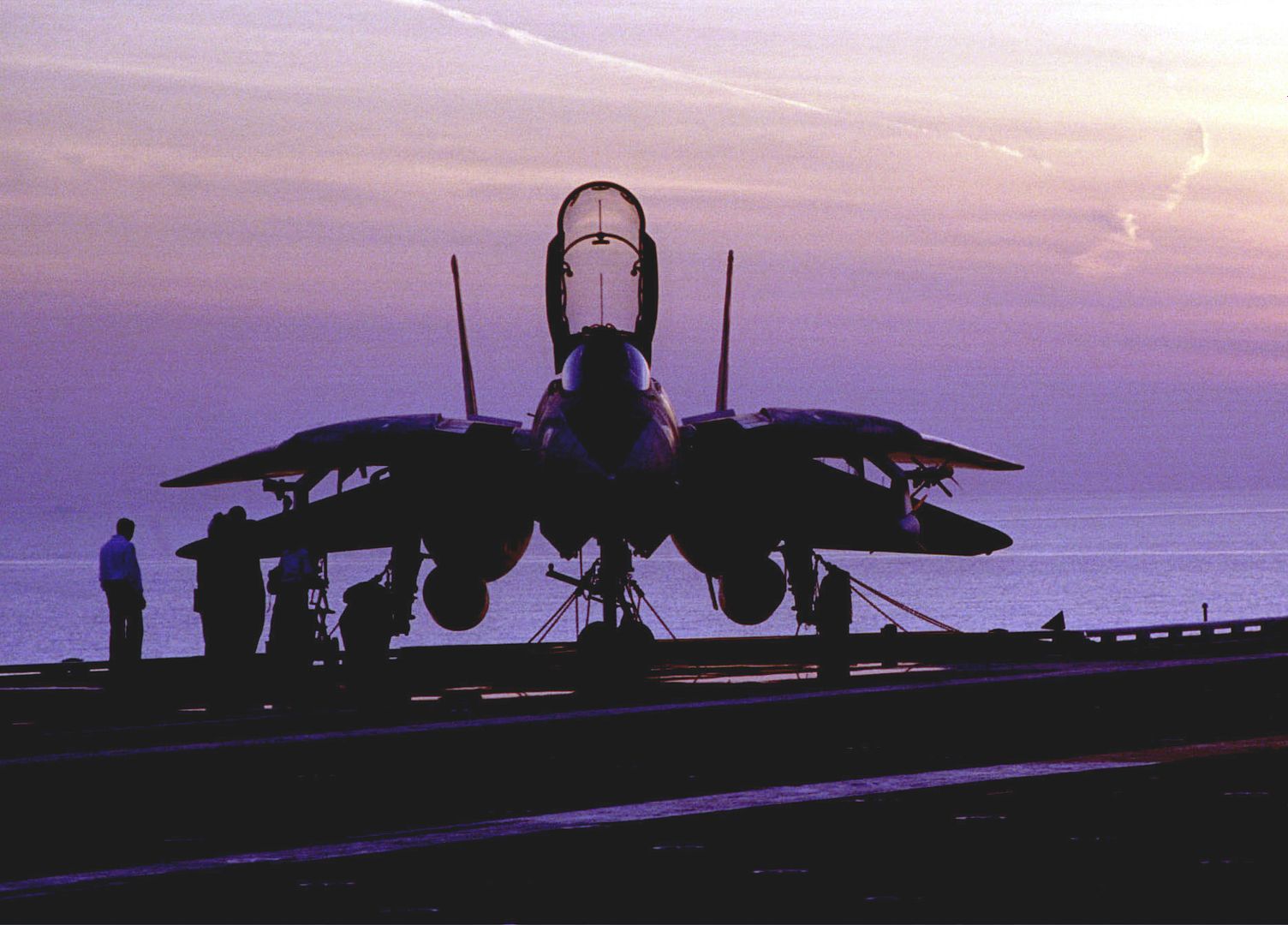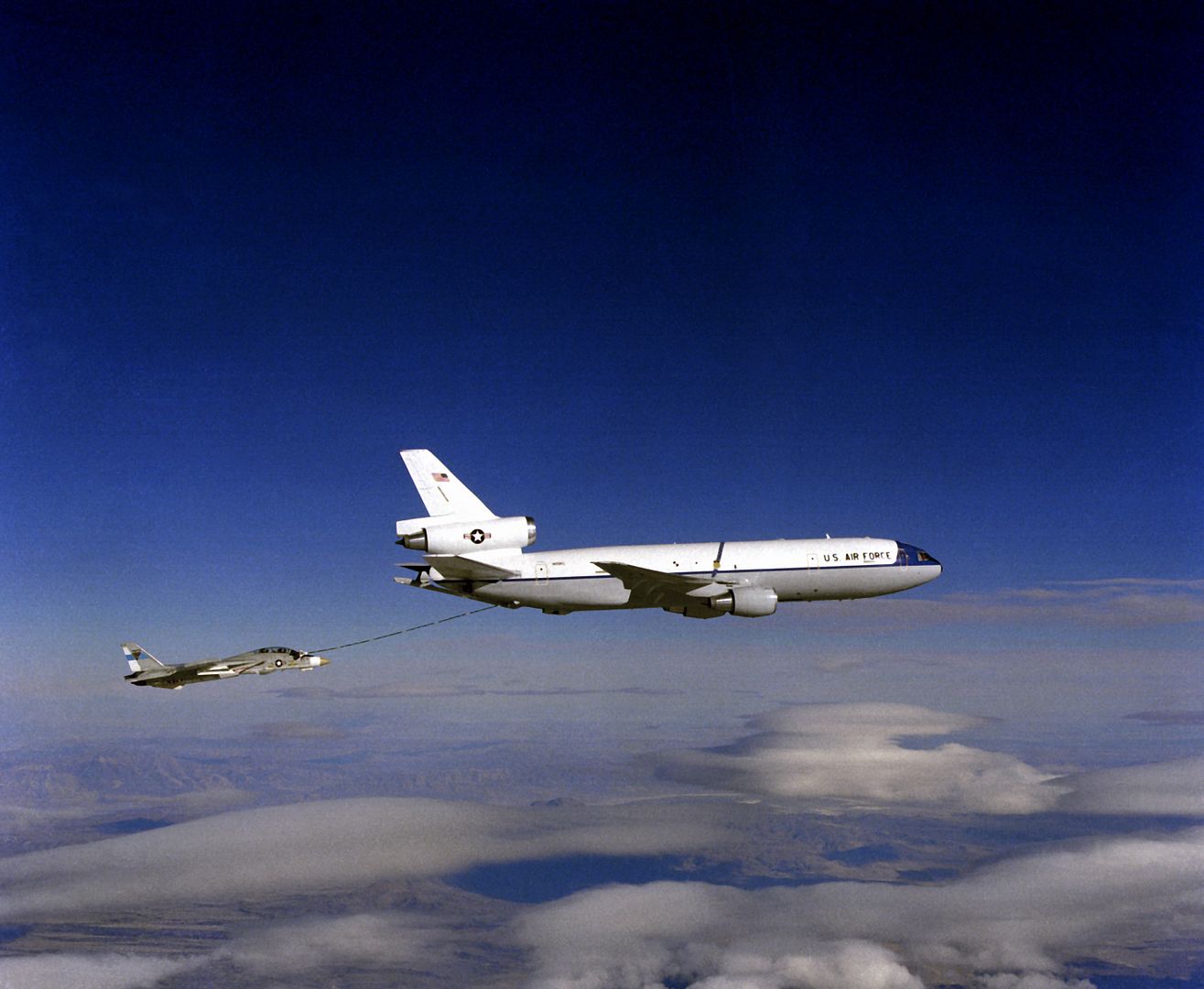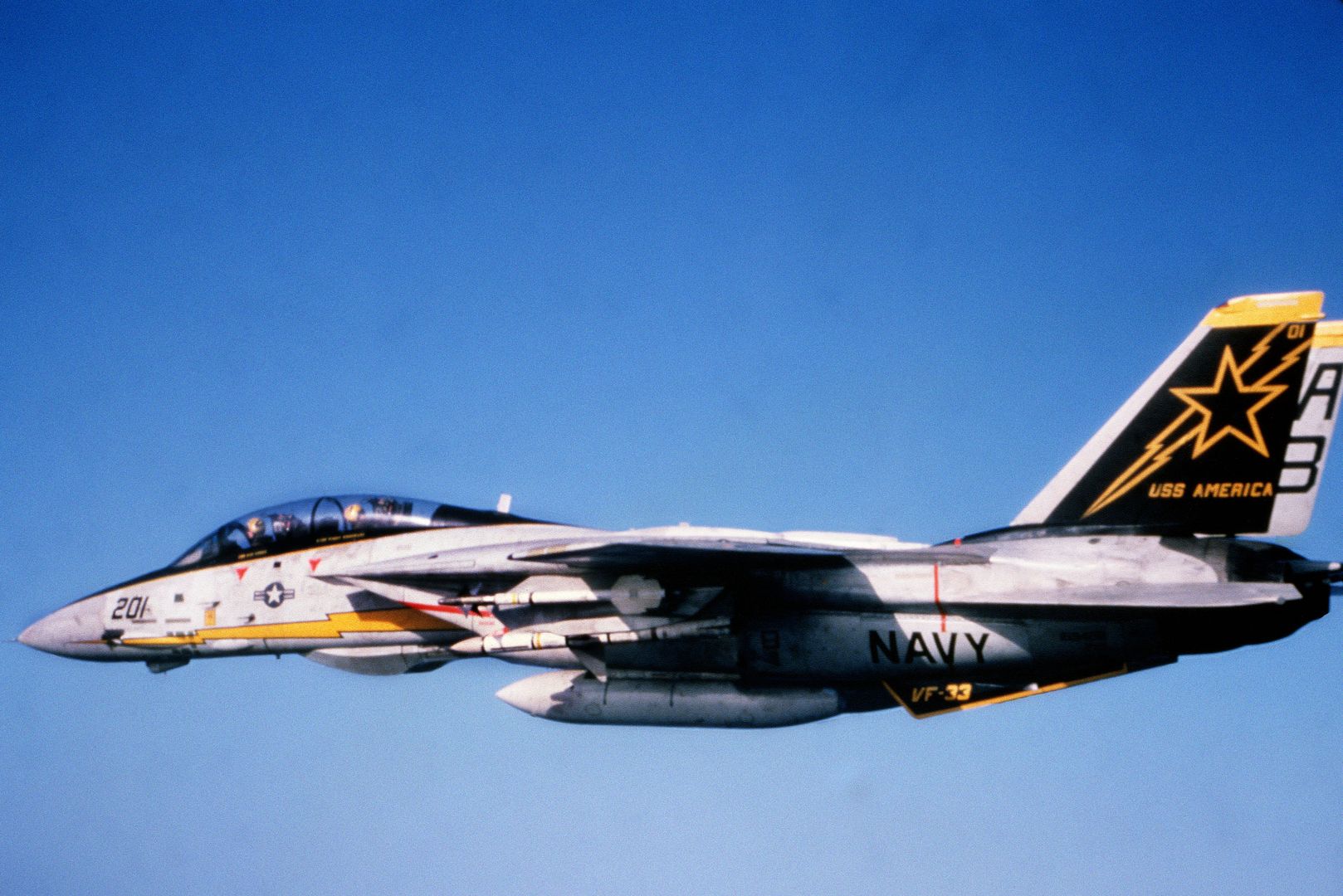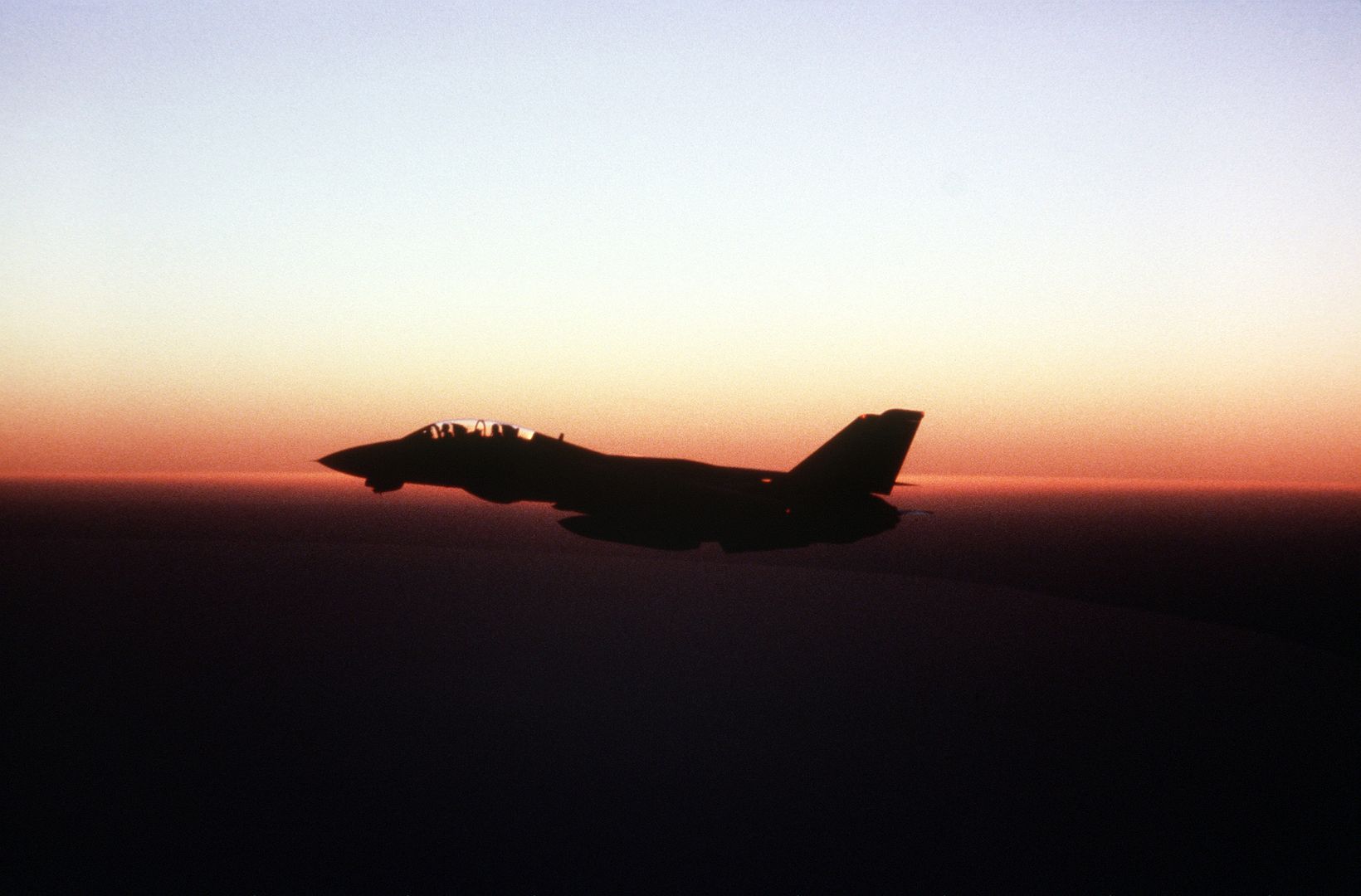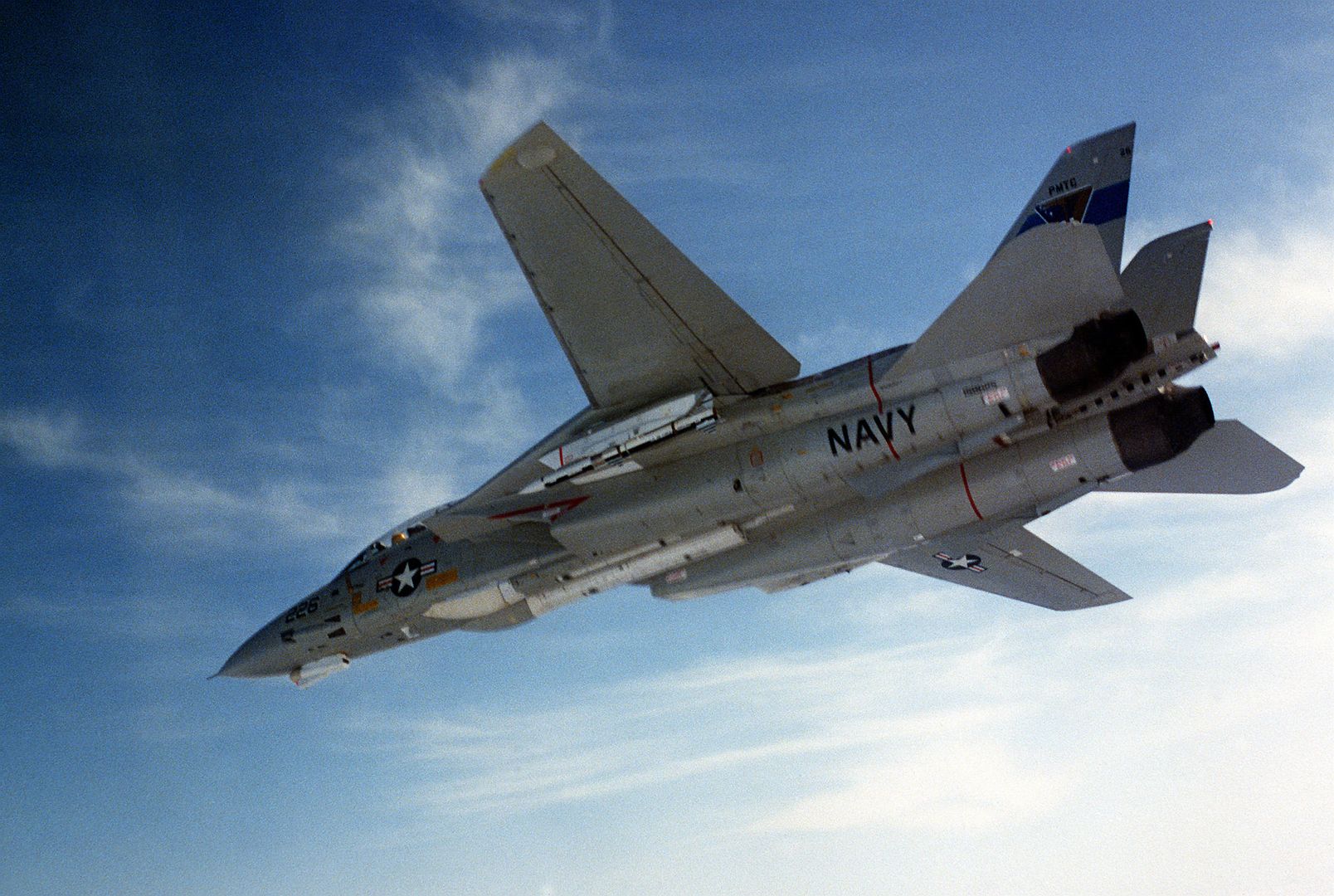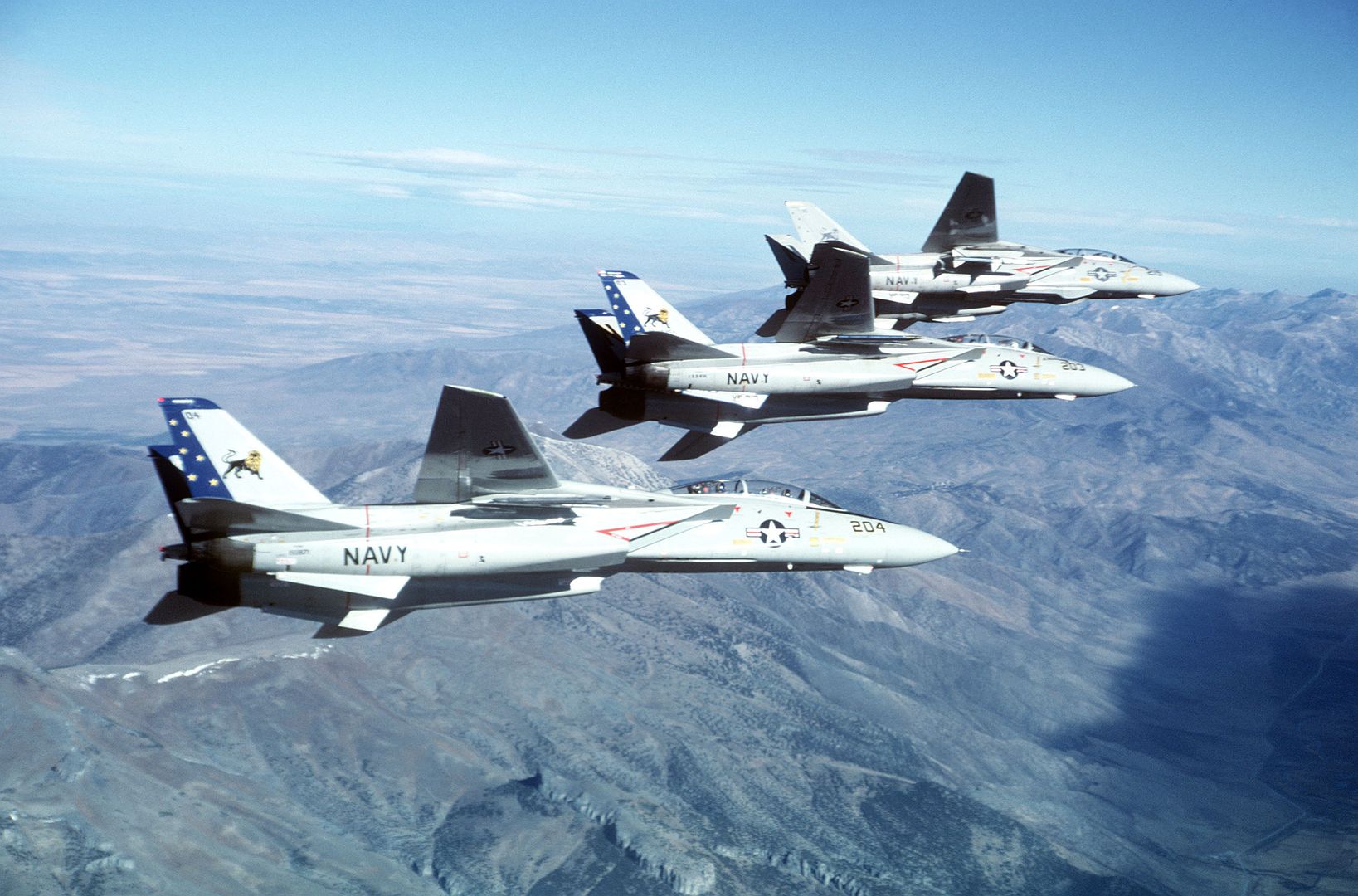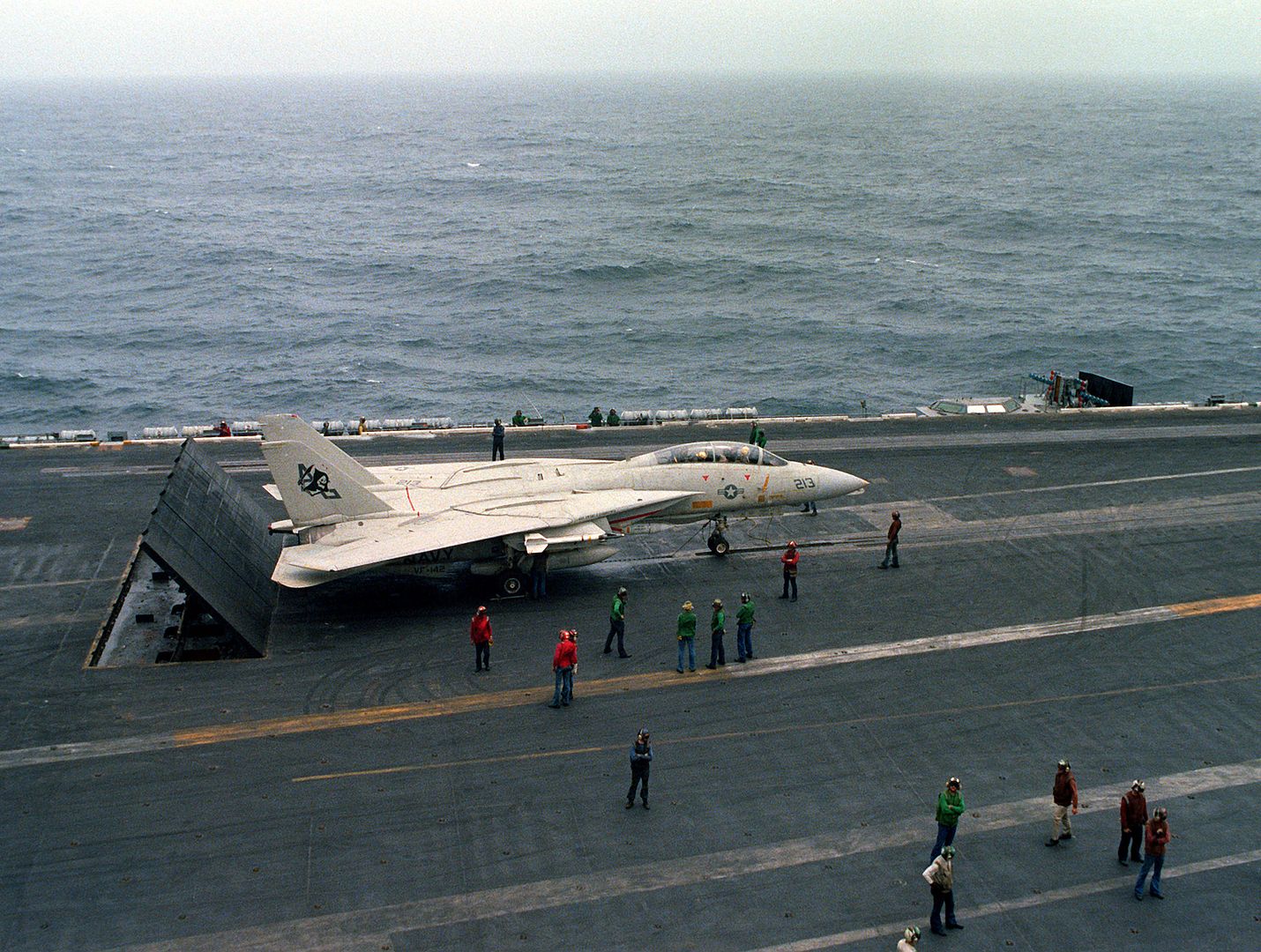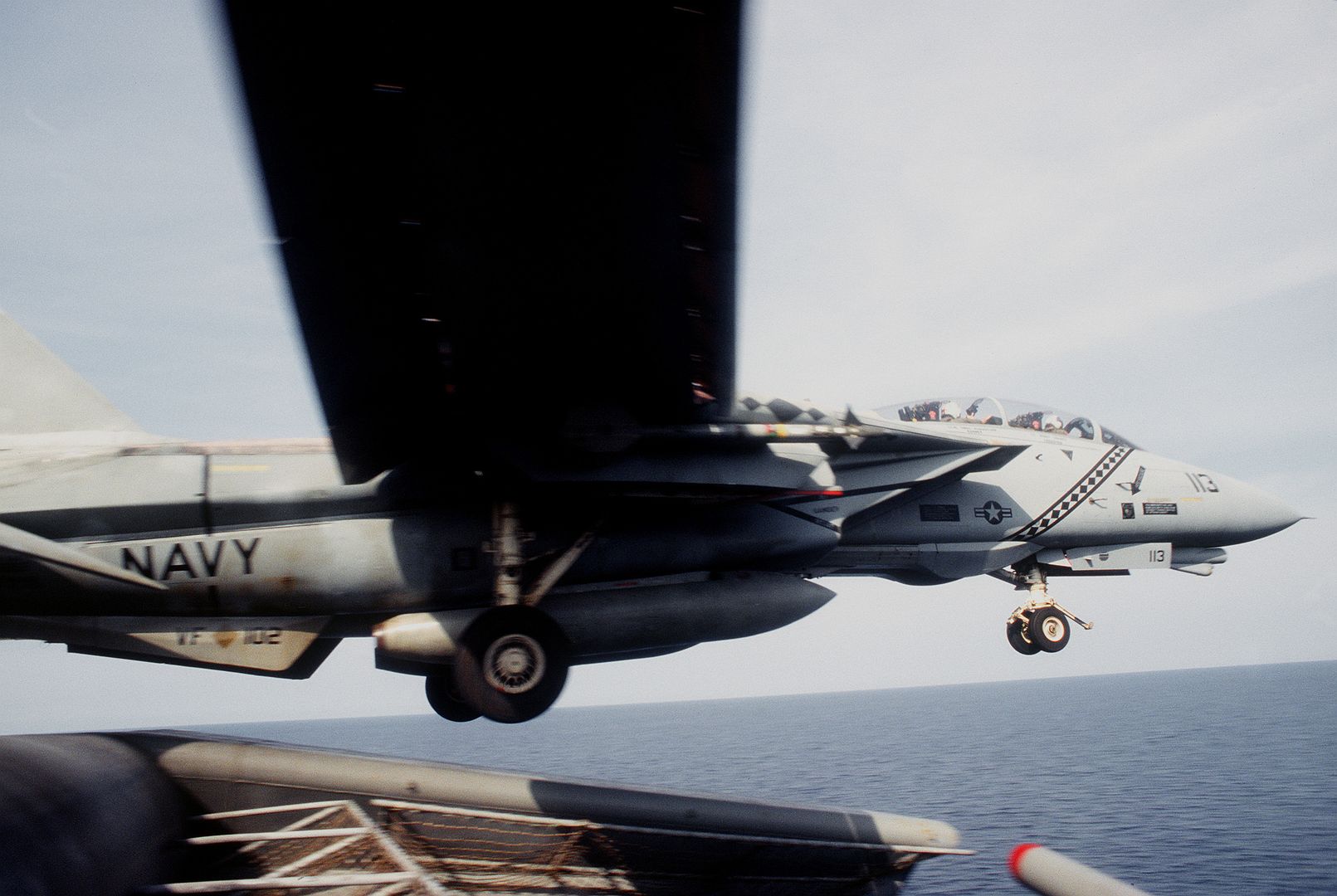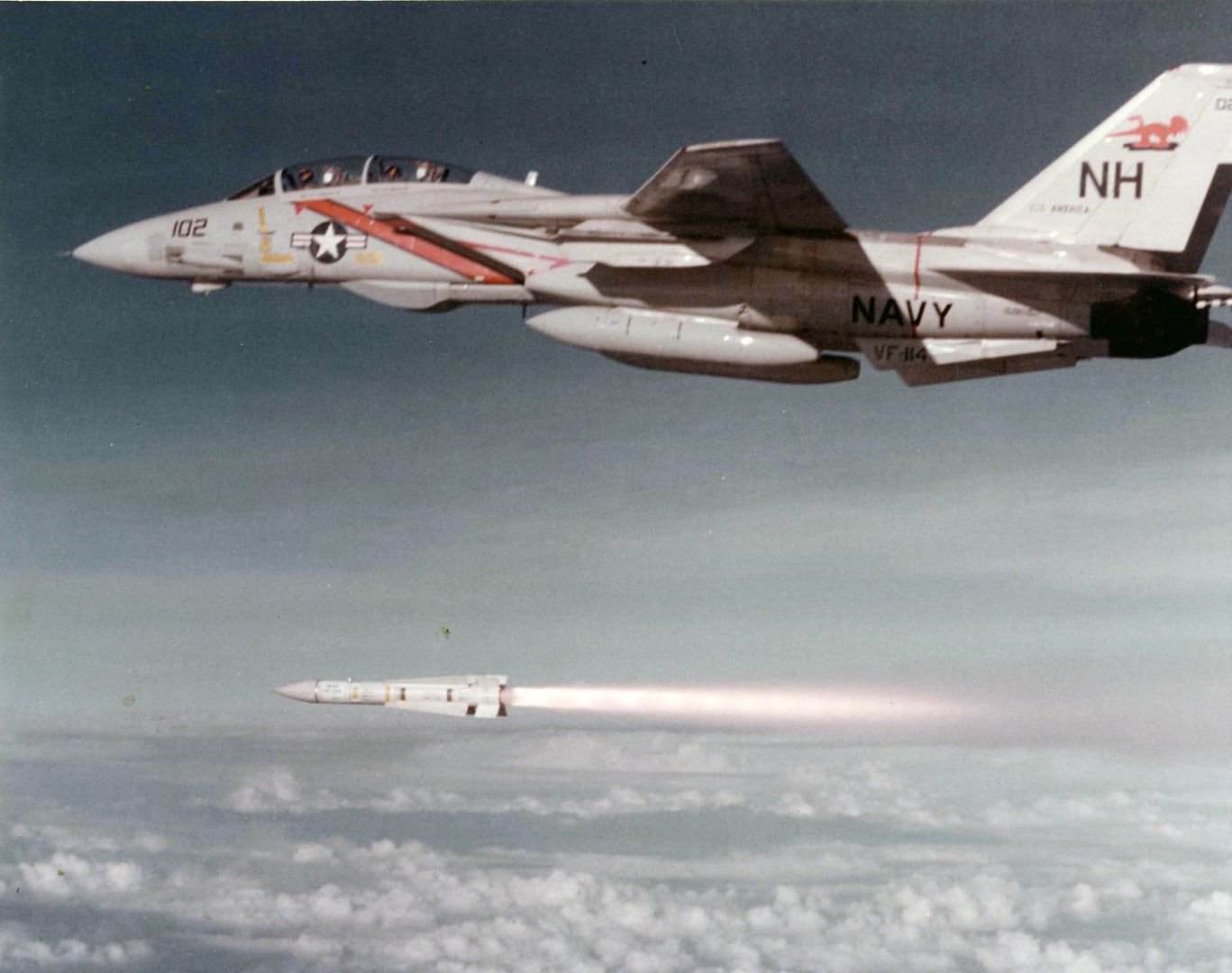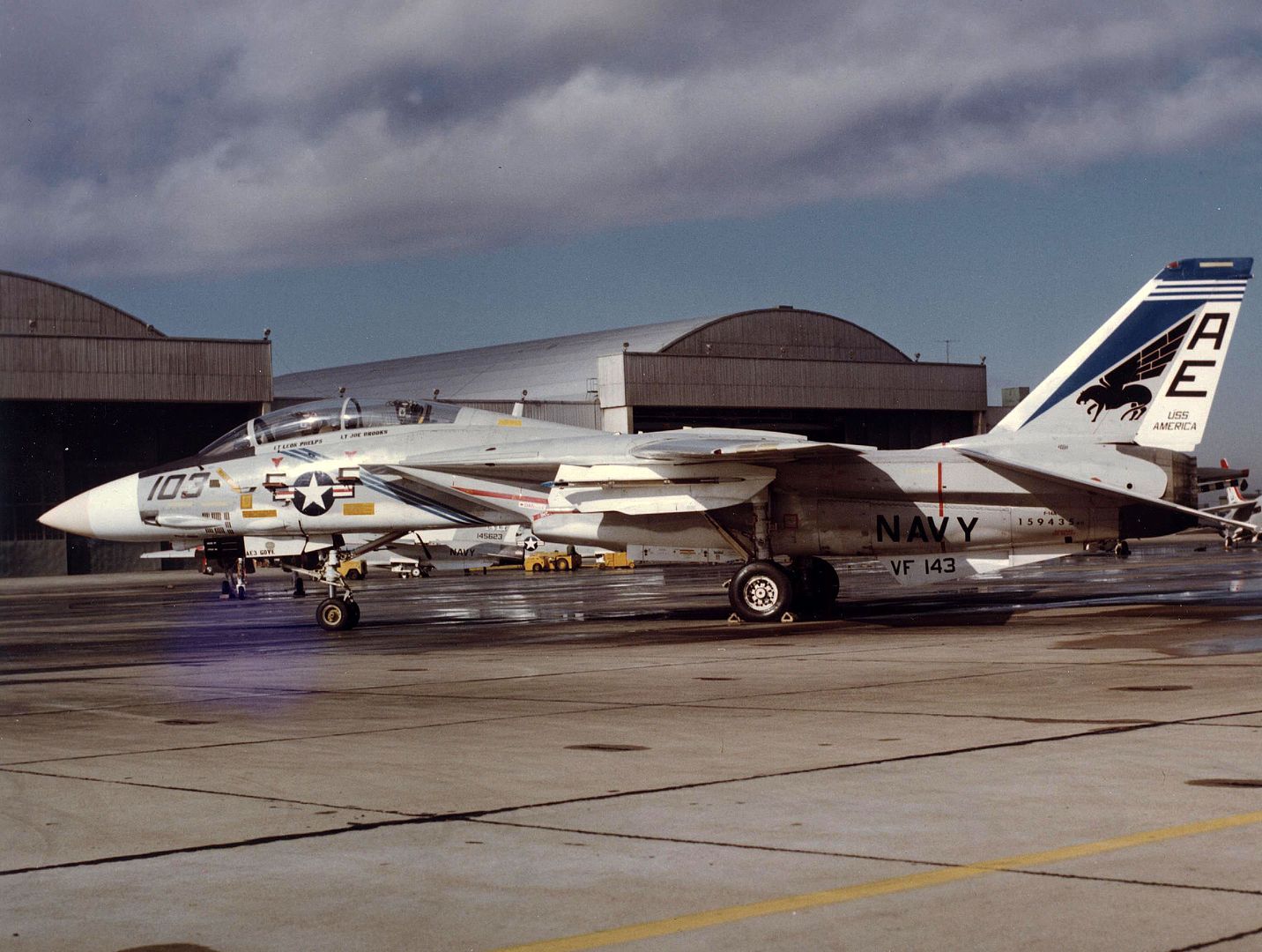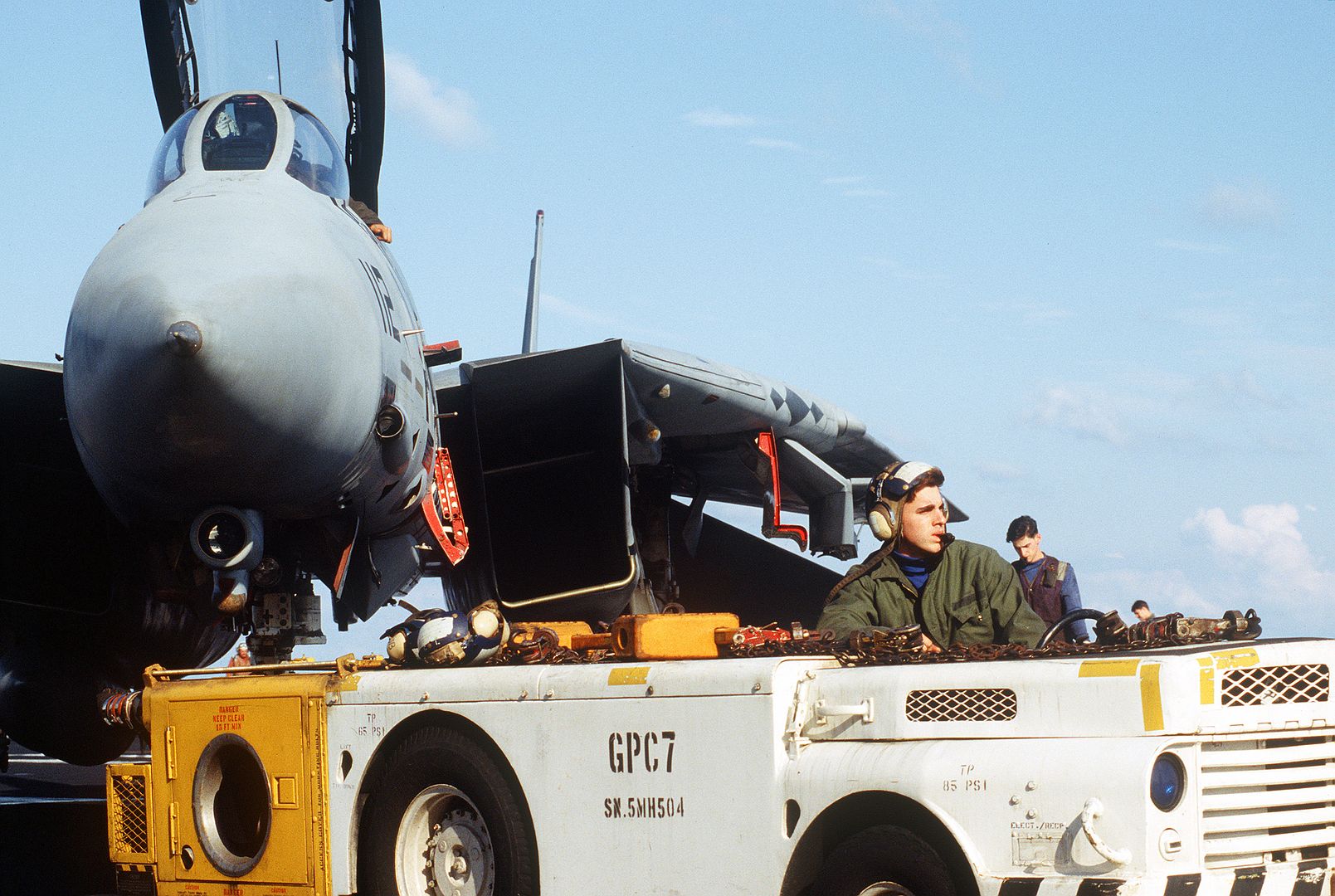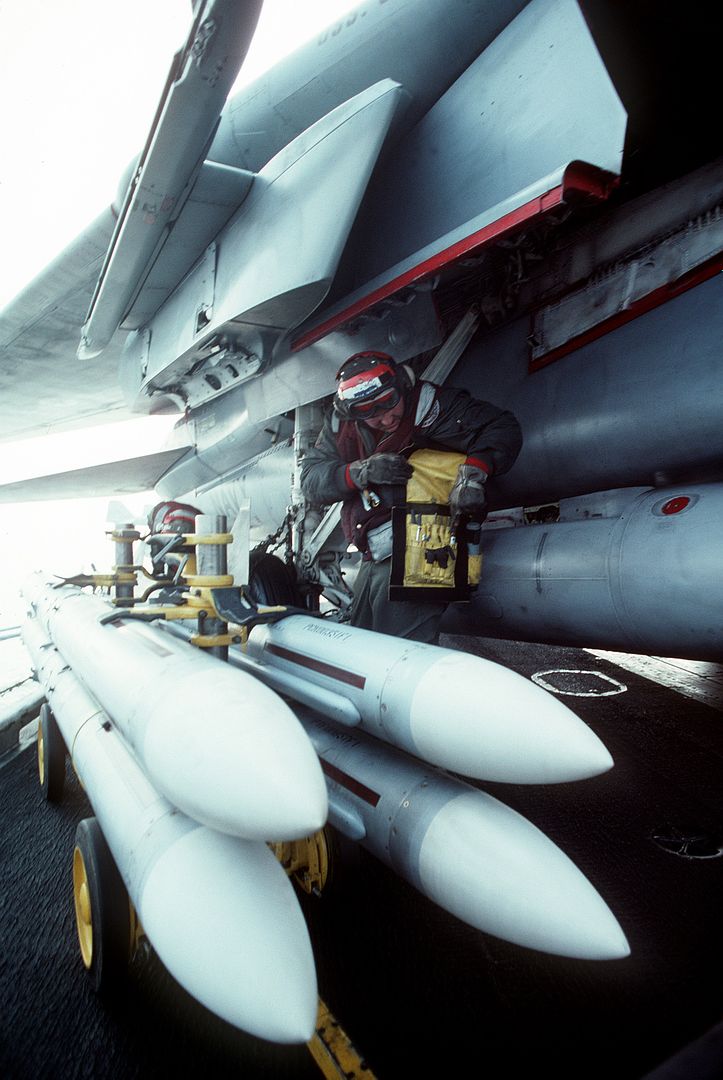Forums
- Forums
- Duggy's Reference Hangar
- USAAF / USN Library
- Grumman F-14 Tomcat
Grumman F-14 Tomcat
Post a reply
- Go to Previous topic
- Go to Next topic
- Go to Welcome
- Go to Introduce Yourself
- Go to General Discussion
- Go to Screenshots, Images and Videos
- Go to Off topic
- Go to Works in Progress
- Go to Skinning Tips / Tutorials
- Go to Skin Requests
- Go to IJAAF Library
- Go to Luftwaffe Library
- Go to RAF Library
- Go to USAAF / USN Library
- Go to Misc Library
- Go to The Ops Room
- Go to Made in Germany
- Go to Campaigns and Missions
- Go to Works in Progress
- Go to Juri's Air-Raid Shelter
- Go to Campaigns and Missions
- Go to Works in Progress
- Go to Skinpacks
- Go to External Projects Discussion
- Go to Books & Resources
-
 Main AdminBeginning in the late 1950s, the U.S. Navy sought a long-range, high-endurance interceptor to defend its carrier battle groups against long-range anti-ship missiles launched from the jet bombers and submarines of the Soviet Union. The U.S. Navy needed a Fleet Air Defense (FAD) aircraft with a more powerful radar and longer range missiles than the F-4 Phantom II carried to intercept both enemy bombers and missiles. The Navy was directed to participate in the Tactical Fighter Experimental (TFX) program with the U.S. Air Force by Secretary of Defense Robert McNamara. McNamara wanted "joint" solutions to service aircraft needs to reduce development costs, and had already directed the Air Force to buy the F-4 Phantom II, which was developed for the Navy and Marine Corps. The Navy strenuously opposed the TFX as it feared compromises necessary for the Air Force's need for a low-level attack aircraft would adversely impact the aircraft's performance as a fighter.
Main AdminBeginning in the late 1950s, the U.S. Navy sought a long-range, high-endurance interceptor to defend its carrier battle groups against long-range anti-ship missiles launched from the jet bombers and submarines of the Soviet Union. The U.S. Navy needed a Fleet Air Defense (FAD) aircraft with a more powerful radar and longer range missiles than the F-4 Phantom II carried to intercept both enemy bombers and missiles. The Navy was directed to participate in the Tactical Fighter Experimental (TFX) program with the U.S. Air Force by Secretary of Defense Robert McNamara. McNamara wanted "joint" solutions to service aircraft needs to reduce development costs, and had already directed the Air Force to buy the F-4 Phantom II, which was developed for the Navy and Marine Corps. The Navy strenuously opposed the TFX as it feared compromises necessary for the Air Force's need for a low-level attack aircraft would adversely impact the aircraft's performance as a fighter.
Weight and performance issues plagued the U.S. Navy F-111B variant for TFX and would not be resolved to the Navy's satisfaction. The F-111 manufacturer General Dynamics partnered with Grumman on the Navy F-111B. With the F-111B program in distress, Grumman began studying improvements and alternatives. In 1966, the Navy awarded Grumman a contract to begin studying advanced fighter designs. Grumman narrowed down these designs to its 303 design. Vice Admiral Thomas F. Connolly, Deputy Chief of Naval Operations for Air Warfare, took the developmental F-111A variant for a flight and discovered that it had difficulty going supersonic and had poor carrier landing characteristics. He later testified before Congress about his concerns against the official Department of the Navy position and, in May 1968, Congress stopped funding for the F-111B, allowing the Navy to pursue an answer tailored to its requirements. The name "Tomcat" was partially chosen to pay tribute to Admiral Connolly, as the nickname "Tom's Cat" had already been widely used by the manufacturer, although the name also followed the Grumman tradition of naming its fighter aircraft after felines.
VFX
The F-111B had been designed for the long-range Fleet Air Defense (FAD) interceptor role, but not for new requirements for air combat based on the experience of American aircraft against agile MiG fighters over Vietnam. The Navy studied the need for VFAX, an additional fighter that was more agile than the F-4 Phantom for air-combat and ground-attack roles.[10] Grumman continued work on its 303 design and offered it to the Navy in 1967, which led to fighter studies by the Navy. The company continued to refine the design into 1968.
In July 1968, the Naval Air Systems Command (NAVAIR) issued a request for proposals (RFP) for the Naval Fighter Experimental (VFX) program. VFX called for a tandem two-seat, twin-engined air-to-air fighter with a maximum speed of Mach 2.2. It would also have a built-in M61 Vulcan cannon and a secondary close air support role. The VFX's air-to-air missiles would be either six AIM-54 Phoenix or a combination of six AIM-7 Sparrow and four AIM-9 Sidewinder missiles. Bids were received from General Dynamics, Grumman, Ling-Temco-Vought, McDonnell Douglas and North American Rockwell; four bids incorporated variable-geometry wings.
McDonnell Douglas and Grumman were selected as finalists in December 1968. Grumman was selected for the contract award in January 1969. Grumman's design reused the TF30 engines from the F-111B, though the Navy planned on replacing them with the Pratt & Whitney F401-400 engines under development for the Navy, along with the related Pratt & Whitney F100 for the USAF. Though lighter than the F-111B, it was still the largest and heaviest U.S. fighter to fly from an aircraft carrier, a consequence of the requirement to carry the large AWG-9 radar and AIM-54 Phoenix missiles (from the F-111B) and an internal fuel load of 16,000 lb (7,300 kg).
Below Mockup




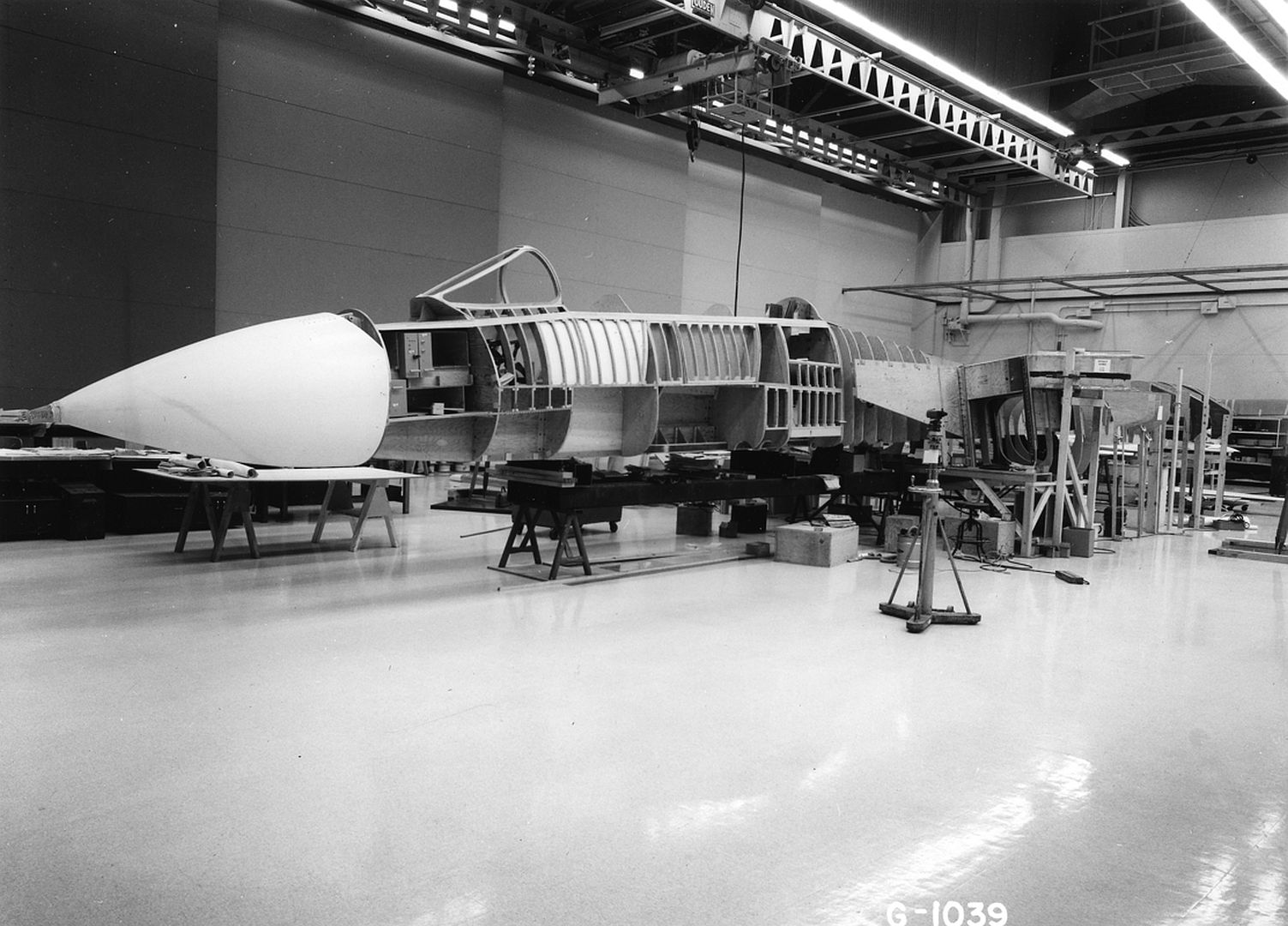




Upon winning the contract for the F-14, Grumman greatly expanded its Calverton, Long Island, New York facility for evaluating the aircraft. Much of the testing, including the first of many compressor stalls and multiple ejections, took place over Long Island Sound. In order to save time and forestall interference from Secretary McNamara, the Navy skipped the prototype phase and jumped directly to full-scale development; the Air Force took a similar approach with its F-15. The F-14 first flew on 21 December 1970, just 22 months after Grumman was awarded the contract, and reached initial operational capability (IOC) in 1973. The United States Marine Corps was initially interested in the F-14 as an F-4 Phantom II replacement; going so far as to send officers to Fighter Squadron One Twenty-Four (VF-124) to train as instructors. The Marine Corps pulled out of any procurement when the development of the stores' management system for ground attack munitions was not pursued. An air-to-ground capability was not developed until the 1990s.
Firing trials involved launches against simulated targets of various types, from cruise missiles to high-flying bombers. AIM-54 Phoenix missile testing from the F-14 began in April 1972. The longest single Phoenix launch was successful against a target at a range of 110 nmi (200 km) in April 1973. Another unusual test was made on 22 November 1973, when six missiles were fired within 38 seconds at Mach 0.78 and 24,800 ft (7,600 m); four scored direct hits.
Below Prototypes

-
 Main AdminImprovements and changes
Main AdminImprovements and changes
With time, the early versions of all the missiles were replaced by more advanced versions, especially with the move to full solid-state electronics that allowed better reliability, better ECCM and more space for the rocket engine. So the early arrangement of the AIM-54A Phoenix active-radar air-to-air missile, the AIM-7E-2 Sparrow Semi-active radar homing air-to-air missile, and the AIM-9J Sidewinder heat-seeking air-to-air missile was replaced in the 1980s with the B (1983) and C (1986) version of the Phoenix, the F (1977), M (1982), P (1987 or later) for Sparrows, and with the Sidewinder, L (1979) and M (1982). Within these versions, there are several improved batches (for example, Phoenix AIM-54C++).
The Tactical Airborne Reconnaissance Pod System (TARPS) was developed in the late 1970s for the F-14. Approximately 65 F-14As and all F-14Ds were modified to carry the pod. TARPS was primarily controlled by the Radar Intercept Officer (RIO) via an extra display for observing reconnaissance data. The "TARPS Digital (TARPS-DI)" was a 1996 upgrade featuring a digital camera. The digital camera was further updated beginning in 1998 with the "TARPS Completely Digital (TARPS-CD)" configuration that also provided real-time transmission of imagery.
Some of the F-14A aircraft underwent engine upgrades to the GE F110-400 in 1987. These upgraded Tomcats were redesignated F-14A+, which was later changed to F-14B in 1991. The F-14D variant was developed at the same time; it included the GE F110-400 engines with newer digital avionics systems such as a glass cockpit, and compatibility with the Link 16 secure datalink. The Digital Flight Control System (DFCS) notably improved the F-14's handling qualities when flying at a high angle of attack or in air combat maneuvering.
While the F-14 had been developed as a lightweight alternative to the 80,000 lb (36,000 kg) F-111B, the F-14 was still the heaviest and most expensive fighter of its time. VFAX was revived in the 1970s as a lower cost solution to replacing the Navy and Marine Corps's fleets of F-4s, and A-7s. VFAX was directed to review the fighters in the USAF Light Weight Fighter competition, which led to the development of the F/A-18 Hornet as roughly a midsize fighter and attack aircraft. In 1994, Congress would reject Grumman proposals to the Navy to upgrade the Tomcat beyond the D model (such as the Super Tomcat 21, the cheaper QuickStrike version, and the more advanced Attack Super Tomcat 21).
Ground attack upgrades
In the 1990s, with the pending retirement of the A-6 Intruder, the F-14 air-to-ground program was resurrected. Trials with live bombs had been carried out in the 1980s; the F-14 was cleared to use basic iron bombs in 1992. In Operation Desert Storm, most air-to-ground missions were left to A-7, A-6 Intruder and F/A-18 Hornet squadrons, while the F-14 focused on air defense operations. Following Desert Storm, F-14As and F-14Bs underwent upgrades to avionics and cockpit displays to enable the use of precision munitions, enhance defensive systems, and apply structural improvements. The new avionics were comparable with the F-14D; upgraded aircraft were designated F-14A (Upgrade) and F-14B (Upgrade) respectively.
By 1994, Grumman and the Navy were proposing ambitious plans for Tomcat upgrades to plug the gap between the retirement of the A-6 and the F/A-18E/F Super Hornet entering service. However, the upgrades would have taken too long to implement to meet the gap, and were priced in the billions; Congress considered this too expensive for an interim solution.A quick, inexpensive upgrade using the Low Altitude Navigation and Targeting Infrared for Night (LANTIRN) targeting pod was devised. The LANTIRN pod provided the F-14 with a forward-looking infrared (FLIR) camera for night operations and a laser target designator to direct laser-guided bombs (LGB). Although LANTIRN is traditionally a two-pod system, an AN/AAQ-13 navigation pod with terrain-following radar and a wide-angle FLIR, along with an AN/AAQ-14 targeting pod with a steerable FLIR and a laser target designator, the decision was made to only use the targeting pod. The Tomcat's LANTIRN pod was altered and improved over the baseline configuration, such as a Global Positioning System / Inertial Navigation System (GPS-INS) capability to allow an F-14 to accurately locate itself. The pod was carried on the right wing glove pylon.
The LANTIRN pod did not require changes to the F-14's own system software, but the pod was designed to operate on a MIL-STD-1553B bus not present on the F-14A or B. Consequently, Martin Marietta specially developed an interface card for LANTIRN. The Radar Intercept Officer (RIO) would receive pod imagery on a 10-inch Programmable Tactical Information Display (PTID) or another Multi-Function Display in the F-14 rear cockpit and guided LGBs using a new hand controller installed on the right side console. Initially, the hand controller replaced the RIO's TARPS control panel, meaning a Tomcat configured for LANTIRN could not carry TARPS and the reverse, but eventually a workaround was later developed to allow a Tomcat to carry LANTIRN or TARPS as needed.
An upgraded LANTIRN named "LANTIRN 40K" for operations up to 40,000 ft (12,000 m) was introduced in 2001, followed by Tomcat Tactical Targeting (T3) and Fast Tactical Imagery (FTI), to provide precise target coordinate determination and ability to transmit images in-flight. Tomcats also added the ability to carry the GBU-38 Joint Direct Attack Munition (JDAM) in 2003, giving it the option of a variety of LGB and GPS-guided weapons. Some F-14Ds were upgraded in 2005 with a ROVER III Full Motion Video (FMV) downlink, a system that transmits real-time images from the aircraft's sensors to the laptop of Forward Air Controller (FAC) on the ground.
Overview
The F-14 Tomcat was designed as both an air superiority fighter and a long-range naval interceptor, which enabled it to both serve as escort attack aircraft when armed with Sparrow missiles and fleet air defense loitering interceptor role when armed with Phoenix missiles. The F-14 was designed with a two-seat cockpit with a bubble canopy which affords all-around visibility aiding aircrew in air-to-air combat. It features variable geometry wings that swing automatically during flight. For high-speed intercept, they are swept back and they swing forward for lower speed flight. It was designed to improve on the F-4 Phantom's air combat performance in most respects.
The F-14's fuselage and wings allow it to climb faster than the F-4, while the twin-tail arrangement offers better stability. The F-14 is equipped with an internal 20 mm M61 Vulcan Gatling cannon mounted on the left side (unlike the Phantom, which was not equipped with an internal gun in the US Navy), and can carry AIM-54 Phoenix, AIM-7 Sparrow, and AIM-9 Sidewinder anti-aircraft missiles. The twin engines are housed in widely spaced nacelles. The flat area of the fuselage between the nacelles is used to contain fuel and avionics systems, such as the wing-sweep mechanism and flight controls, as well as weaponry since the wings were not used for carrying ordnance. By itself, the fuselage provides approximately 40 to 60 percent of the F-14's aerodynamic lifting surface depending on the wing sweep position. The lifting body characteristics of the fuselage allowed one F-14 to safely land after suffering a mid-air collision that sheared off more than half of the plane's right wing in 1991.
Variable-geometry wings and aerodynamic design
The F-14's wing sweep can be varied between 20? and 68? in flight, and can be automatically controlled by the Central Air Data Computer, which maintains wing sweep at the optimum lift-to-drag ratio as the Mach number varies; pilots can manually override the system if desired. When parked, the wings can be "overswept" to 75? to overlap the horizontal stabilizers to save deck space aboard carriers. In an emergency, the F-14 can land with the wings fully swept to 68?, although this presents a significant safety hazard due to greatly increased stall speed. Such an aircraft would typically be diverted from an aircraft carrier to a land base if an incident did occur. The F-14 has flown safely with an asymmetrical wing-sweep during testing, and was deemed able to land aboard a carrier if needed in an emergency. The wing pivot points were significantly spaced far apart. This had two benefits. The first was that weaponry could be fitted on a pylon on the fixed wing glove, liberating the wings from having swiveling pylons fitted, a feature which had proven to add significant drag on the F-111B. Since less of the total lifting area was variable, the centre of lift moved less as the wings moved reducing trim drag at high speed. When the wing was swept back, its thickness-to-chord-ratio decreased which allowed the aircraft to satisfy the mach 2.4 top speed required by the U.S. Navy. The body of the aircraft contributed significantly to overall lift and so the Tomcat possessed a lower wing loading than its wing area would suggest. When carrying four Phoenix missiles or other heavy stores between the engines this advantage was lost and maneuverability was reduced in those configurations.
Ailerons are not fitted, with roll control being provided by wing-mounted spoilers at low speed (which are disabled if the sweep angle exceeds 57?), and by differential operation of the all-moving tailerons at high speed.[18] Full-span slats and flaps are used to increase lift both for landing and combat, with slats being set at 17? for landing and 7? for combat, while flaps are set at 35? for landing and 10? for combat. An air bag filled up the space occupied by the swept-back wing when the wing was in the forward position and a flexible fairing on top of the wing smoothed out the shape transition between the fuselage and top wing area. The twin tail layout helps in maneuvers at high angle of attack (AoA) while reducing the height of the aircraft to fit within the limited roof clearance of hangars aboard aircraft carriers. Two triangular shaped retractable surfaces, called glove vanes, were originally mounted in the forward part of the wing glove, and could be automatically extended by the flight control system at high Mach numbers. They were used to generate additional lift (force) ahead of the aircraft's center of gravity, thus helping to compensate for mach tuck at supersonic speeds. Automatically deployed at above Mach 1.4, they allowed the F-14 to pull 7.5 g at Mach 2 and could be manually extended with wings swept full aft. They were later disabled, however, owing to their additional weight and complexity. The air brakes consist of top-and-bottom extendable surfaces at the rearmost portion of the fuselage, between the engine nacelles. The bottom surface is split into left and right halves, the tailhook hangs between the two halves, an arrangement sometimes called the "castor tail".
Engines and structure
The F-14 was initially equipped with two Pratt & Whitney TF30 (or JTF10A) augmented turbofan engines, each rated at 20,900 lb (93 kN) of thrust, which enabled the aircraft to attain a maximum speed of Mach 2.34. The F-14 would normally fly at a cruising speed for reduced fuel consumption, which was important for conducting lengthy patrol missions. Both of the engine's rectangular air intake ramps were equipped with movable ramps and bleed doors to meet the airflow requirements of the engine but prevent dangerous shockwaves from entering. De Laval nozzles were also fitted to the engine's exhaust.
The performance of the TF30 engine became an object of criticism. John Lehman, Secretary of the Navy in the 1980s, told the U.S. Congress that the TF30/F-14 combination was "probably the worst engine/airframe mismatch we have had in years" and that the TF30 was "a terrible engine"; 28% of all F-14 accidents were attributed to the engine. A high frequency of turbine blade failures led to the reinforcement of the entire engine bay to limit damage from such failures. The engines also had proved to be extremely prone to compressor stalls, which could easily result in loss of control, severe yaw oscillations, and could lead to an unrecoverable flat spin. At specific altitudes, exhaust produced by missile launches could cause an engine compressor stall. This led to the development of a bleed system that temporarily blocks the frontal intake ramp and reduces engine power during missile launch. With the TF30, the F-14's overall thrust-to-weight ratio at maximum takeoff weight is around 0.56, considerably less than the F-15A's ratio of 0.85; when fitted with the General Electric F110 engine, an improved thrust-to-weight ratio of 0.73 at maximum weight and 0.88 at normal takeoff weight was achieved. Despite having large differences in thrust, the F-14A, F-14B, and later F-14D with the newer GE F-110 engines were rated at the same top speed.
The wings had a two-spar structure with integral fuel tanks. Around 25% of the structure is made of titanium, including the wing box, wing pivots, and upper and lower wing skins; this is a light, rigid, and strong material and electron beam welding was used in the construction of the titanium parts.
The landing gear was very robust, in order to withstand catapult launches (takeoffs) and recoveries (landings) needed for carrier operations. It comprised a double nosewheel and widely spaced single main wheels. There were no hardpoints on the sweeping parts of the wings, and so all the armament is fitted on the belly between the air intake ramps and on pylons under the wing gloves. Internal fuel capacity is 2,400 US gal (9,100 l): 290 US gal (1,100 l) in each wing, 690 US gal (2,600 l) in a series of tanks aft of the cockpit, and a further 457 US gal (1,730 l) in two feeder tanks. It can carry two 267 US gal (1,010 l) external drop tanks under the engine intake ramps. There is also an air-to-air refueling probe, which folds into the starboard nose.
Avionics and flight controls
The cockpit has two seats, arranged in tandem, outfitted with Martin-Baker GRU-7A rocket-propelled ejection seats, rated from zero altitude and zero airspeed up to 450 knots. The canopy is spacious, and fitted with four mirrors to effectively provide all-round visibility. Only the pilot has flight controls; the flight instruments themselves are of a hybrid analog-digital nature. The cockpit also features a head-up display (HUD) to show primarily navigational information; several other avionics systems such as communications and direction-finders are integrated into the AWG-9 radar's display. A significant feature of the F-14 was its Central Air Data Computer (CADC), designed by Garrett AiResearch, that formed the onboard integrated flight control system. It used a MOSFET-based Large-Scale Integration chipset, the MP944, making it the first microprocessor in history.
The aircraft's large nose contains a two-person crew and several bulky avionics systems. The main element is the Hughes AN/AWG-9 X band radar; the antenna is a 36 in (91 cm)-wide planar array, and has integrated Identification friend or foe antennas. The AWG-9 has several search and tracking modes, such as Track while scan (TWS), Range-While-Search (RWS), Pulse-Doppler Single-Target Track (PDSTT), and Jam Angle Track (JAT); a maximum of 24 targets can be tracked simultaneously, and six can be engaged in TWS mode up to around 60 mi (97 km). Cruise missiles are also possible targets with the AWG-9, which can lock onto and track small objects even at low altitude when in Pulse-Doppler mode. For the F-14D, the AWG-9 was replaced by the upgraded APG-71 radar. The Joint Tactical Information Distribution System (JTIDS)/Link 16 for data communications was added later on.
The F-14 also features electronic countermeasures (ECM) and radar warning receiver (RWR) systems, chaff/flare dispensers, fighter-to-fighter data link, and a precise inertial navigation system. The early navigation system was inertial-based, point-of-origin coordinates were programmed into a navigation computer and gyroscopes would track the aircraft's every motion to calculate distance and direction from that starting point. Global Positioning System later was integrated to provide more precise navigation and redundancy in case either system failed. The chaff/flare dispensers were located on the underside of the fuselage and on the tail. The RWR system consisted of several antennas on the aircraft's fuselage, which could roughly calculate both direction and distance of enemy radar users; it could also differentiate between search radar, tracking radar, and missile-homing radar.
Featured in the sensor suite was the AN/ALR-23, an Infra-red search and track sensor using indium antimonide detectors, mounted under the nose; however this was replaced by an optical system, Northrop's AAX-1, also designated TCS (TV Camera Set). The AAX-1 helped pilots visually identify and track aircraft, up to a range of 60 miles (97 km) for large aircraft. The radar and the AAX-1 were linked, allowing the one detector to follow the direction of the other. A dual infrared/optical detection system was adopted on the later F-14D.
Armament
The F-14 was designed to combat highly maneuverable aircraft as well as the Soviet anti-ship cruise missile and bomber (Tupolev Tu-16, Tupolev Tu-22, Tupolev Tu-22M) threats. The Tomcat was to be a platform for the AIM-54 Phoenix, but unlike the canceled F-111B, it could also engage medium- and short-range threats with other weapons.The F-14 was an air superiority fighter, not just a long-range interceptor aircraft. Over 6,700 kg (14,800 lb) of stores could be carried for combat missions on several hardpoints under the fuselage and under the wings. Commonly, this meant a maximum of two?four Phoenixes or Sparrows on the belly stations, two Phoenixes/Sparrows on the wing hardpoints, and two Sidewinders on the wing hardpoints.The F-14 was also fitted with an internal 20 mm M61 Vulcan Gatling-type cannon.
Operationally, the capability to hold up to six Phoenix missiles was never used, although early testing was conducted; there was never a threat requirement to engage six hostile targets simultaneously and the load was too heavy to safely recover aboard an aircraft carrier in the event that the missiles were not fired. During the height of Cold War operations in the late 1970s and 1980s, the typical weapon loadout on carrier-deployed F-14s was usually only one AIM-54 Phoenix, augmented by two AIM-9 Sidewinders, two AIM-7 Sparrow IIIs, a full loadout of 20 mm ammunition and two drop tanks. The Phoenix missile was used twice in combat by the U.S. Navy, both over Iraq in 1999, but the missiles did not score any kills.
Iran made use of the Phoenix system, claiming several kills with it during the 1980?1988 Iran?Iraq War. Iran tried to use other missiles on the Tomcat. It attempted to integrate the Russian R-27R "Alamo" BVR missile, but was apparently unsuccessful.
United States Navy
The F-14 began replacing the F-4 Phantom II in U.S. Navy service starting in September 1974 with squadrons VF-1 "Wolfpack" and VF-2 "Bounty Hunters" aboard USS Enterprise and participated in the American withdrawal from Saigon. The F-14 had its first kills in U.S. Navy service on 19 August 1981 over the Gulf of Sidra in what is known as the Gulf of Sidra incident. In that engagement, two F-14s from VF-41 Black Aces were engaged by two Libyan Su-22 "Fitters". The F-14s evaded the short range heat seeking AA-2 "Atoll" missile and returned fire, downing both Libyan aircraft. U.S. Navy F-14s once again were pitted against Libyan aircraft on 4 January 1989, when two F-14s from VF-32 shot down two Libyan MiG-23 "Floggers" over the Gulf of Sidra in a second Gulf of Sidra incident.
Its first sustained combat use was as a photo reconnaissance platform. The Tomcat was selected to inherit the reconnaissance mission upon the departure of the dedicated RA-5C Vigilante and RF-8G Crusaders from the fleet. A large pod called the Tactical Airborne Reconnaissance Pod System (TARPS) was developed and fielded on the Tomcat in 1981. With the retirement of the last RF-8G Crusaders in 1982, TARPS F-14s became the U.S. Navy's primary tactical reconnaissance system. One of two Tomcat squadrons per airwing was designated as a TARPS unit and received 3 TARPS capable aircraft and training for 4 TARPS aircrews.
While the Tomcat was being used by Iran in combat against Iraq in its intended air superiority mission in the early 1980s, the U.S. Navy found itself flying regular daily combat missions over Lebanon to photograph activity in the Bekaa Valley. At the time, the Tomcat had been thought too large and vulnerable to be used over land, but the need for imagery was so great that Tomcat aircrews developed high-speed medium altitude tactics to deal with considerable AAA and SA-7 SAM threat in the Bekaa area. The first exposure of a Navy Tomcat to an SA-2 missile was over Somalia in April 1983 when a local battery was unaware of two Tomcats scheduled for a TARPS mission in a prelude to an upcoming international exercise in the vicinity of Berbera. An SA-2 was fired at the second Tomcat while conducting 10,000-ft mapping profile at max conserve setting. The Tomcat aircrews spotted the missile launch and dove for the deck thereby evading it without damage. The unexpected demand for combat TARPS laid the way for high altitude sensors such as the KA-93 Long Range Optics (LOROP) to be rapidly procured for the Tomcat as well as an Expanded Chaff Adapter (ECA) to be incorporated in an AIM-54 Phoenix Rail. Commercial "Fuzz buster" type radar detectors were also procured and mounted in pairs in the forward cockpit as a stop gap solution to detect SAM radars such as the SA-6. The ultimate solution was an upgrade to the ALR-67 then being developed, but it would not be ready until the advent of the F-14A+ later in the 1980s.
The participation of the F-14 in the 1991 Operation Desert Storm consisted of Combat Air Patrol (CAP) over the Red Sea and the Persian Gulf and overland missions consisting of strike escort and reconnaissance. Until the waning days of Desert Storm, in-country air superiority was tasked to USAF F-15 Eagles due to the way the Air Tasking Orders (ATO) delegated primary overland CAP stations to the F-15 Eagle. The governing Rules of Engagement (ROE) also dictated a strict Identification Friend or Foe (IFF) requirement when employing Beyond Visual Range weapons such as the AIM-7 Sparrow and particularly the AIM-54 Phoenix. This hampered the Tomcat from using its most powerful weapon. Furthermore, the powerful emissions from the AWG-9 radar are detectable at great range with a radar warning receiver. Iraqi fighters routinely retreated as soon as the Tomcats "lit them up" with the AWG-9.The U.S. Navy suffered its only F-14 loss from enemy action on 21 January 1991 when BuNo 161430, an F-14A upgraded to an F-14A+, from VF-103 was shot down by an SA-2 surface-to-air missile while on an escort mission near Al Asad airbase in Iraq. Both crews survived ejection with the pilot being rescued by USAF Special Operation Forces and the RIO being captured by Iraqi troops as a POW until the end of the war. The F-14 also achieved its final kill in US service, a Mi-8 "Hip" helicopter, with an AIM-9 Sidewinder.
In 1995, F-14s from VF-14 and VF-41 participated in Operation Deliberate Force as well as Operation Allied Force in 1999, and in 1998, VF-32 and VF-213 participated in Operation Desert Fox. On 15 February 2001, the Joint Direct Attack Munition or JDAM was added to the Tomcat's arsenal. On 7 October 2001, F-14s would lead some of the first strikes into Afghanistan marking the start of Operation Enduring Freedom and the first F-14 drop of a JDAM occurred on 11 March 2002. F-14s from VF-2, VF-31, VF-32, VF-154, and VF-213 would also participate in Operation Iraqi Freedom. The F-14Ds of VF-2, VF-31, and VF-213 obtained JDAM capability in March 2003. On 10 December 2005, the F-14Ds of VF-31 and VF-213 were upgraded with a ROVER III downlink for transmitting images to a ground Forward Air Controller (FAC). The Navy decided to retire the F-14 with the F/A-18E/F Super Hornet filling the roles of fleet defense and strike formerly filled by the F-14.
The last American F-14 combat mission was completed on 8 February 2006, when a pair of Tomcats landed aboard USS Theodore Roosevelt after one dropped a bomb over Iraq. During their final deployment with Theodore Roosevelt, VF-31 and VF-213 collectively completed 1,163 combat sorties totaling 6,876 flight hours, and dropped 9,500 lb (4,300 kg) of ordnance during reconnaissance, surveillance, and close air support missions in support of Operation Iraqi Freedom. USS Theodore Roosevelt launched an F-14D, of VF-31, for the last time on 28 July 2006; piloted by Lt. Blake Coleman and Lt. Cmdr Dave Lauderbaugh as RIO. The last two F-14 squadrons, the VF-31 Tomcatters, and the VF-213 Black Lions conducted their last fly-in at Naval Air Station Oceana on 10 March 2006.
The official final flight retirement ceremony was on 22 September 2006 at Naval Air Station Oceana and was flown by Lt. Cmdr. Chris Richard and Lt. Mike Petronis as RIO in a backup F-14 after the primary aircraft experienced mechanical problems. The actual last flight of an F-14 in U.S. service took place 4 October 2006, when an F-14D of VF-31 was ferried from NAS Oceana to Republic Airport on Long Island, New York. The remaining intact F-14 aircraft in the U.S. were flown to and stored at the 309th Aerospace Maintenance and Regeneration Group "Boneyard", at Davis-Monthan Air Force Base, Arizona; in 2007 the U.S. Navy announced plans to shred the remaining F-14s to prevent any components from being acquired by Iran. In August 2009, the 309th AMARG stated that the last aircraft were taken to HVF West, Tucson, Arizona for shredding. At that time only 11 F-14s remained in desert storage.
Below F-14A
As usual right click and save as for details.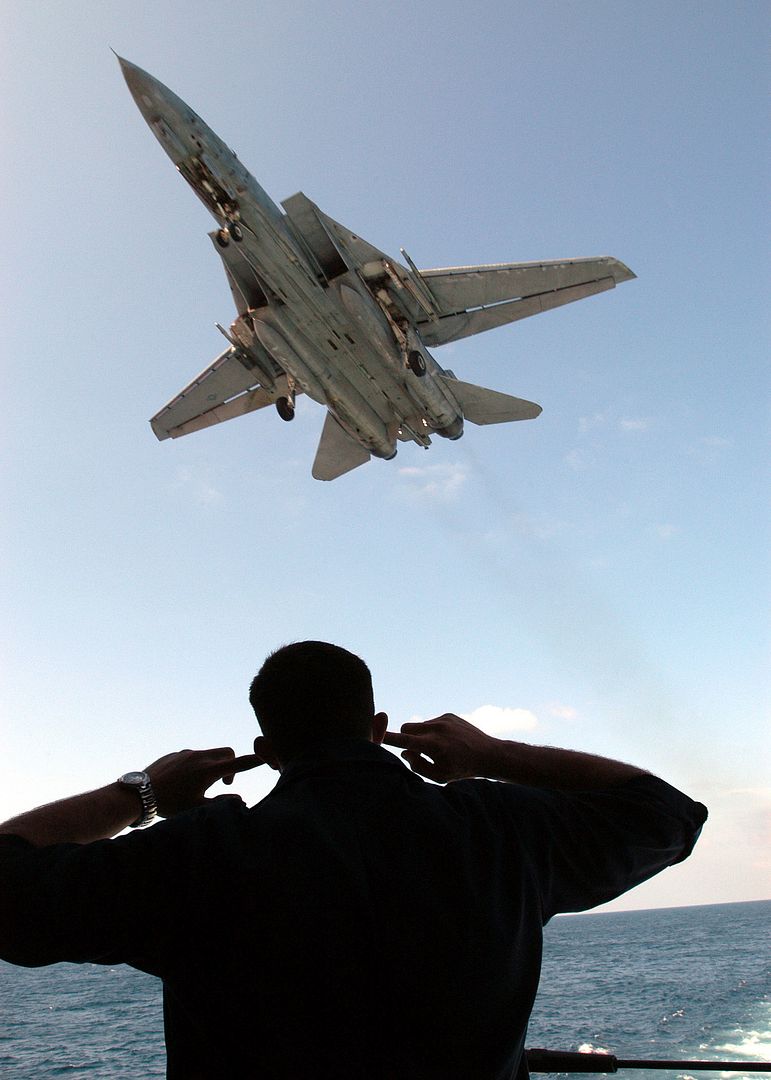





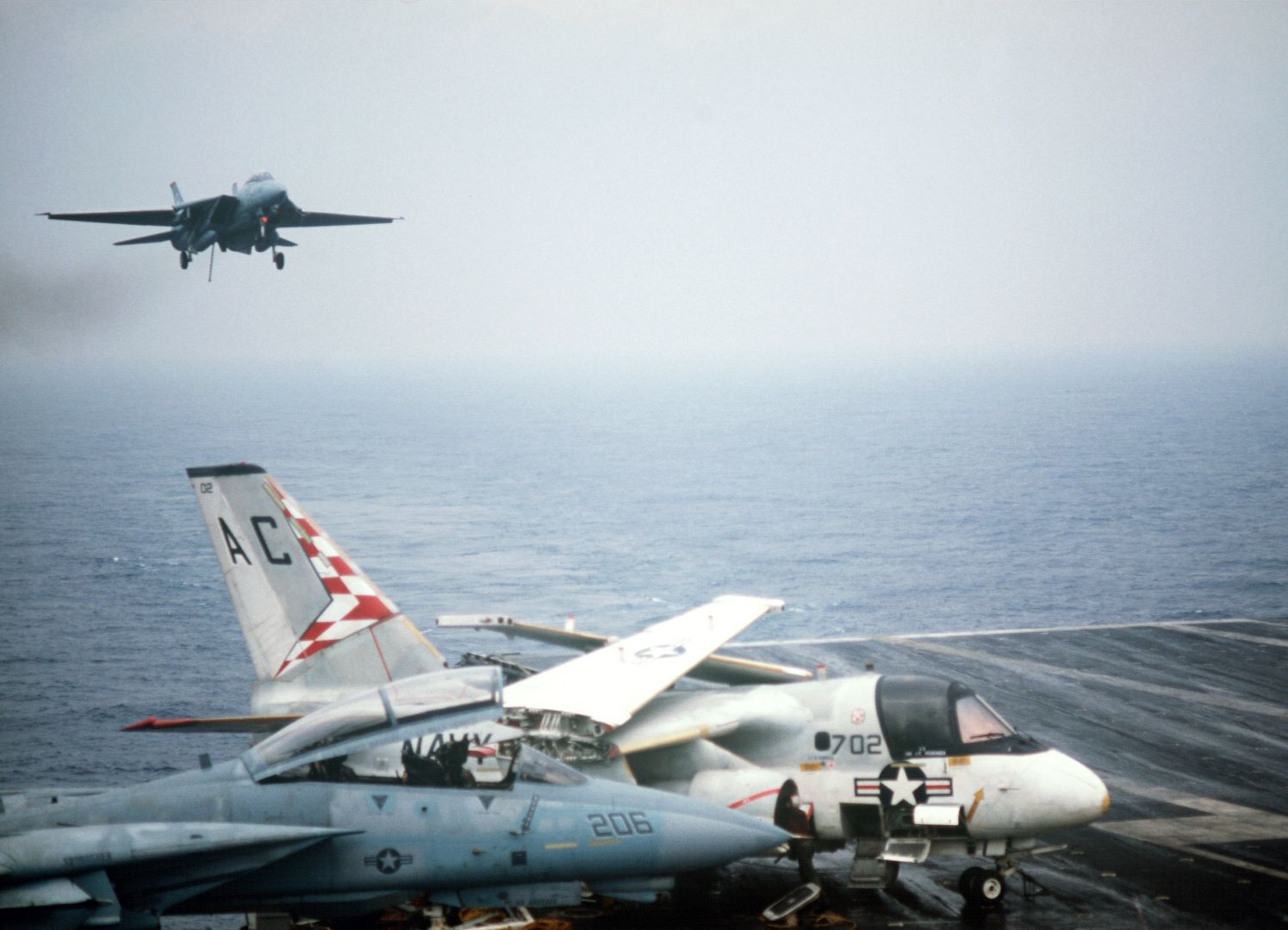




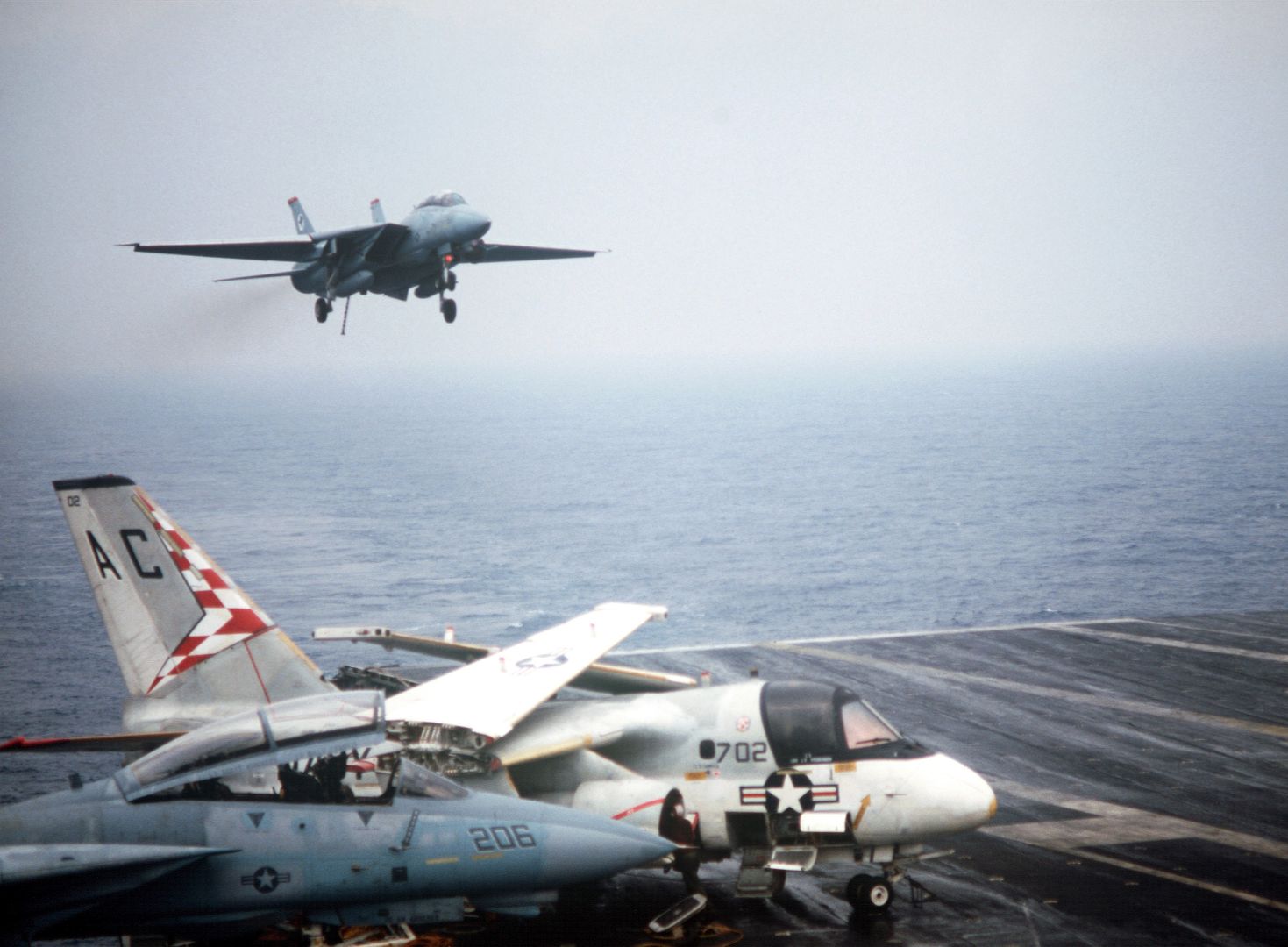
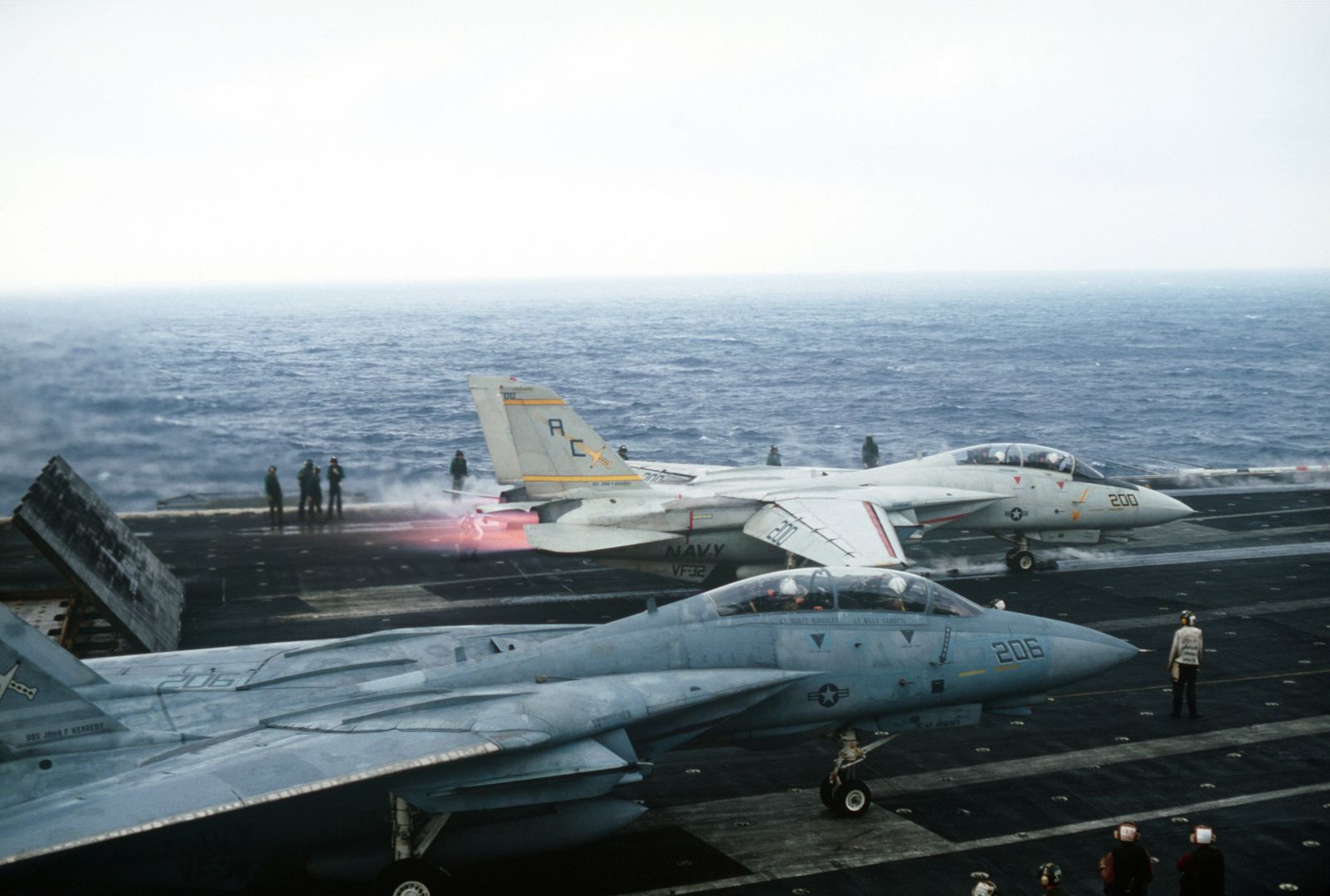
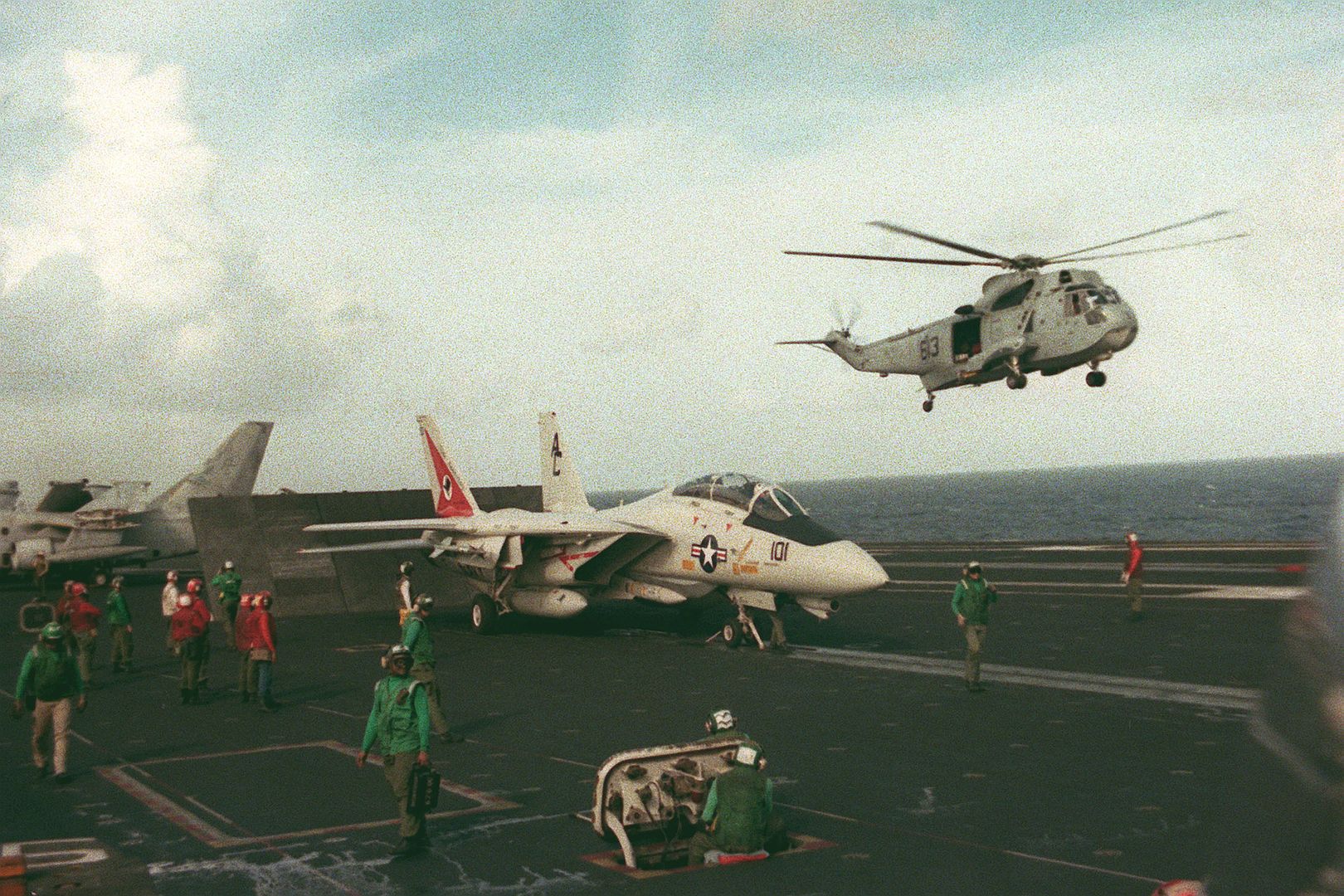






-
 Main Admin
Main Admin -
 Main Admin
Main Admin -
 Main Admin
Main Admin -
 Main Admin
Main Admin -
 Main Admin
Main Admin -
 Main Admin
Main Admin -
 Main Admin
Main Admin -
 Main Admin
Main Admin
Post a reply
- Go to Previous topic
- Go to Next topic
- Go to Welcome
- Go to Introduce Yourself
- Go to General Discussion
- Go to Screenshots, Images and Videos
- Go to Off topic
- Go to Works in Progress
- Go to Skinning Tips / Tutorials
- Go to Skin Requests
- Go to IJAAF Library
- Go to Luftwaffe Library
- Go to RAF Library
- Go to USAAF / USN Library
- Go to Misc Library
- Go to The Ops Room
- Go to Made in Germany
- Go to Campaigns and Missions
- Go to Works in Progress
- Go to Juri's Air-Raid Shelter
- Go to Campaigns and Missions
- Go to Works in Progress
- Go to Skinpacks
- Go to External Projects Discussion
- Go to Books & Resources

